In the Kathmandu Valley there are unmissable places to visit: whether you are interested in nature trails, discover sacred temple-cities and medieval villages, we are sure you will find interesting destinations to include in your itinerary.
With only a few days available, with a guide in hand, we have independently organized two day trips among the most significant places for us. We have collected them for you in this post because they can inspire you for the organization of a future trip or even just make you dream of these places far away, where life continues to be marked according to traditions.
Bodhnath
This place is the greatest expression of Tibetan Buddhism outside Tibet. Here you can find the largest stupa of Asia, around which devotees gather every day to walk the kora, that is the clockwise path around the dome.
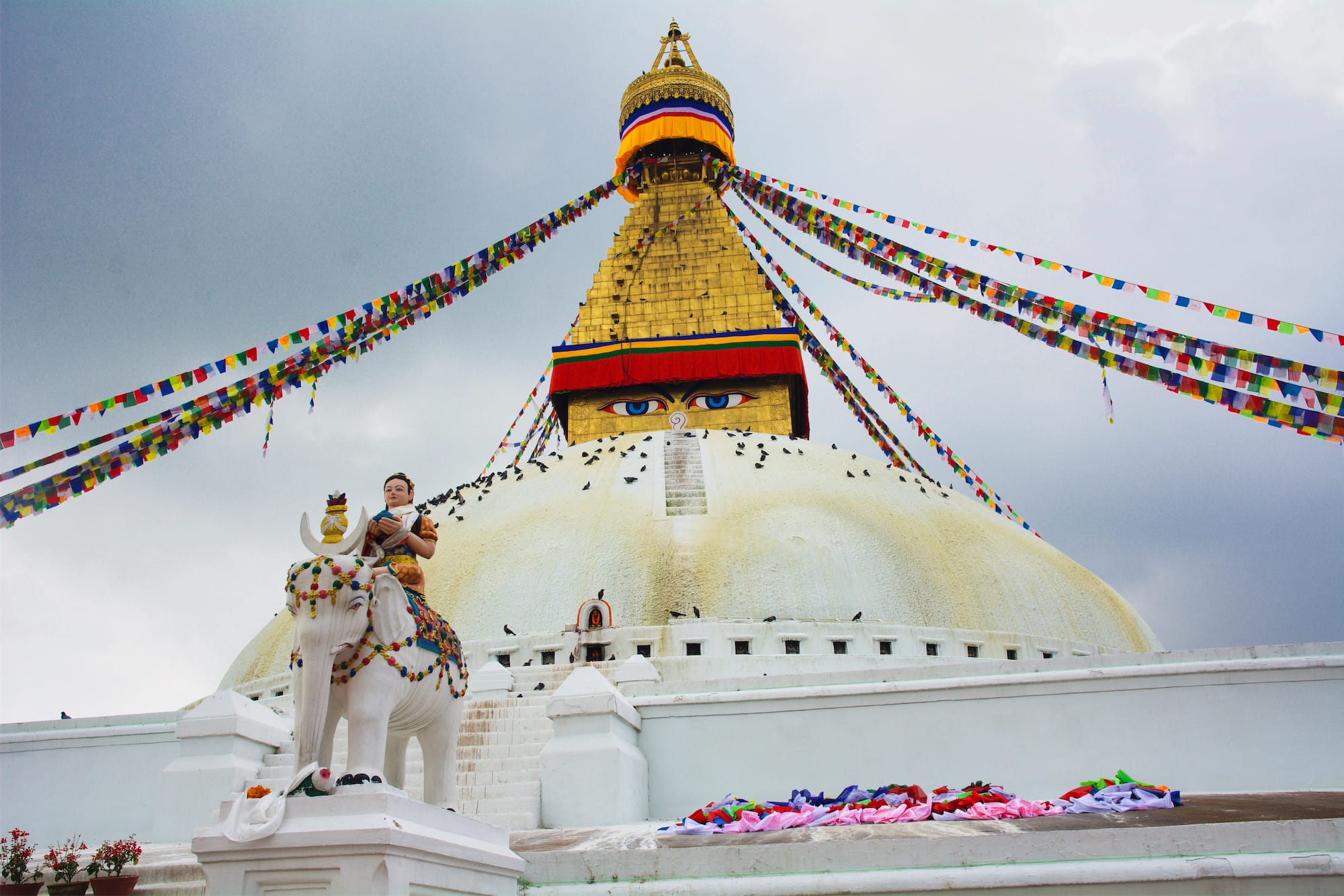
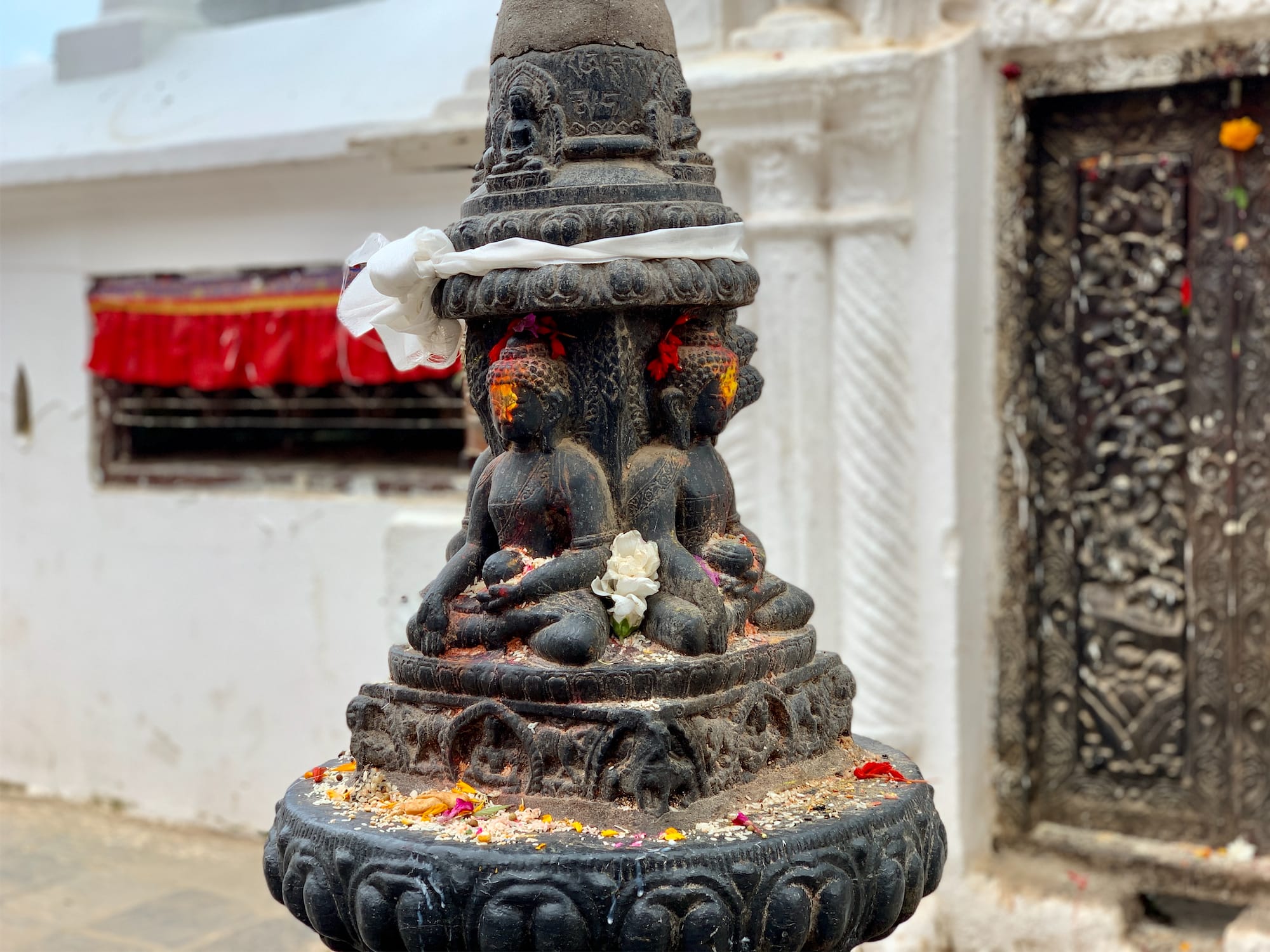
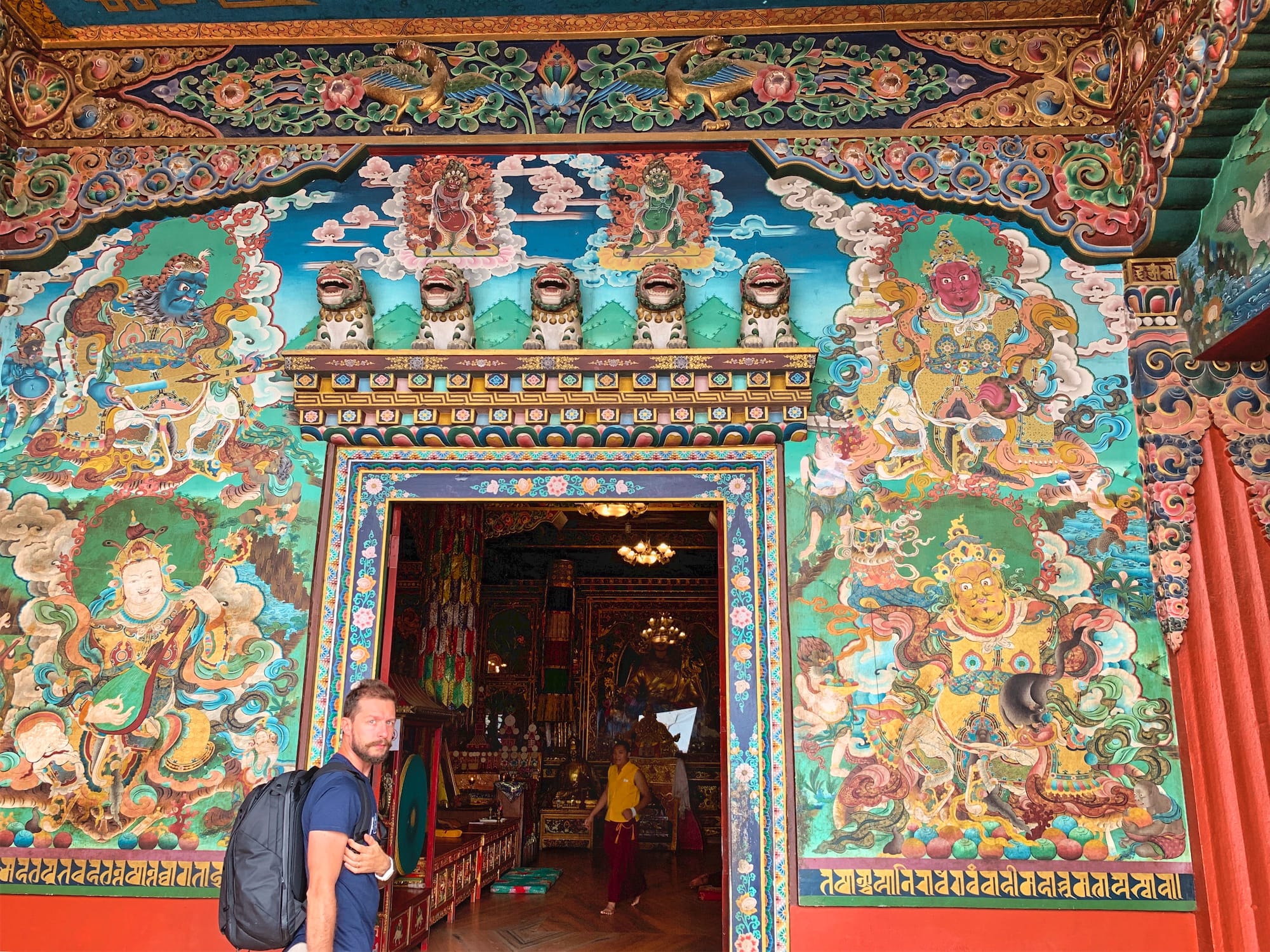

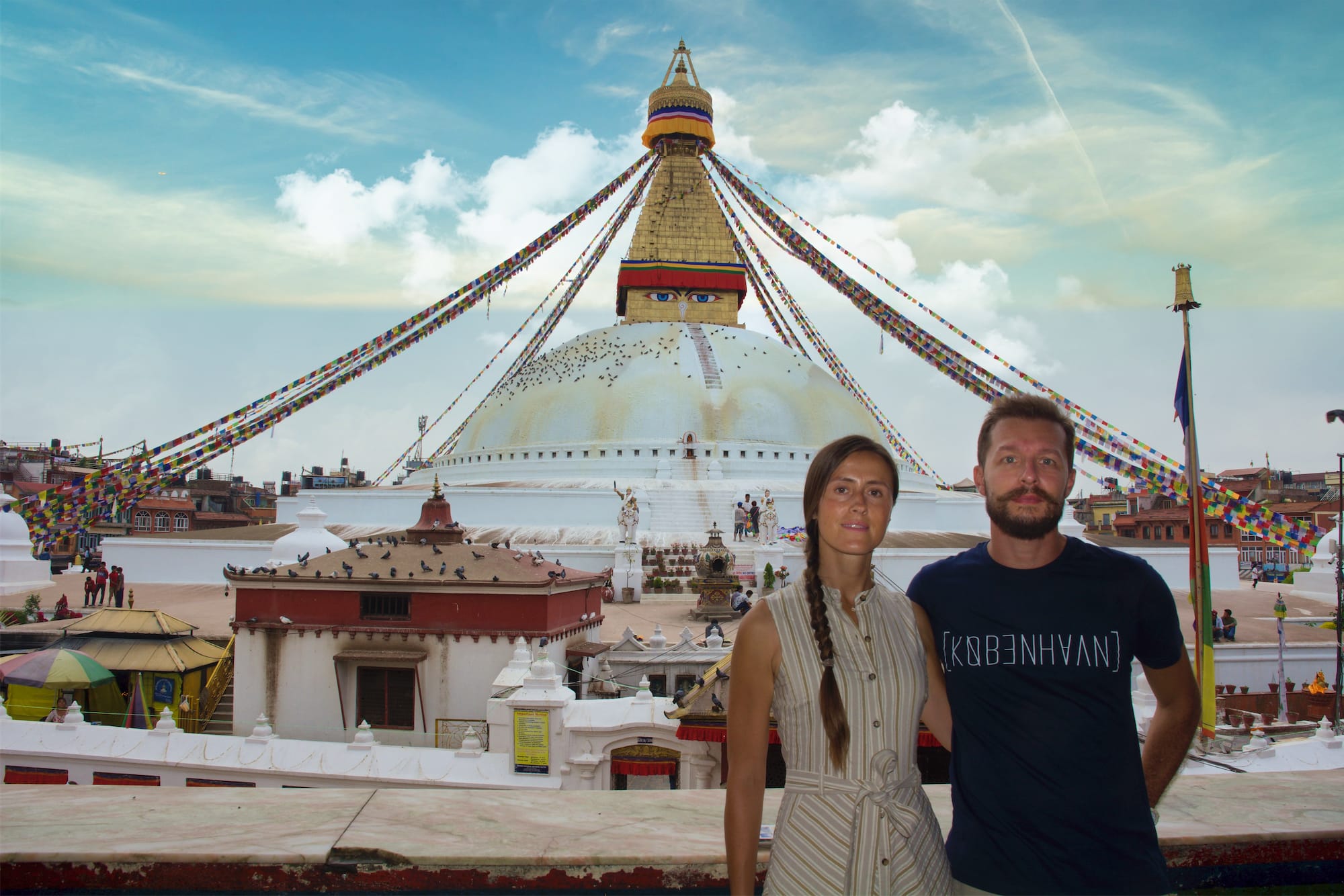
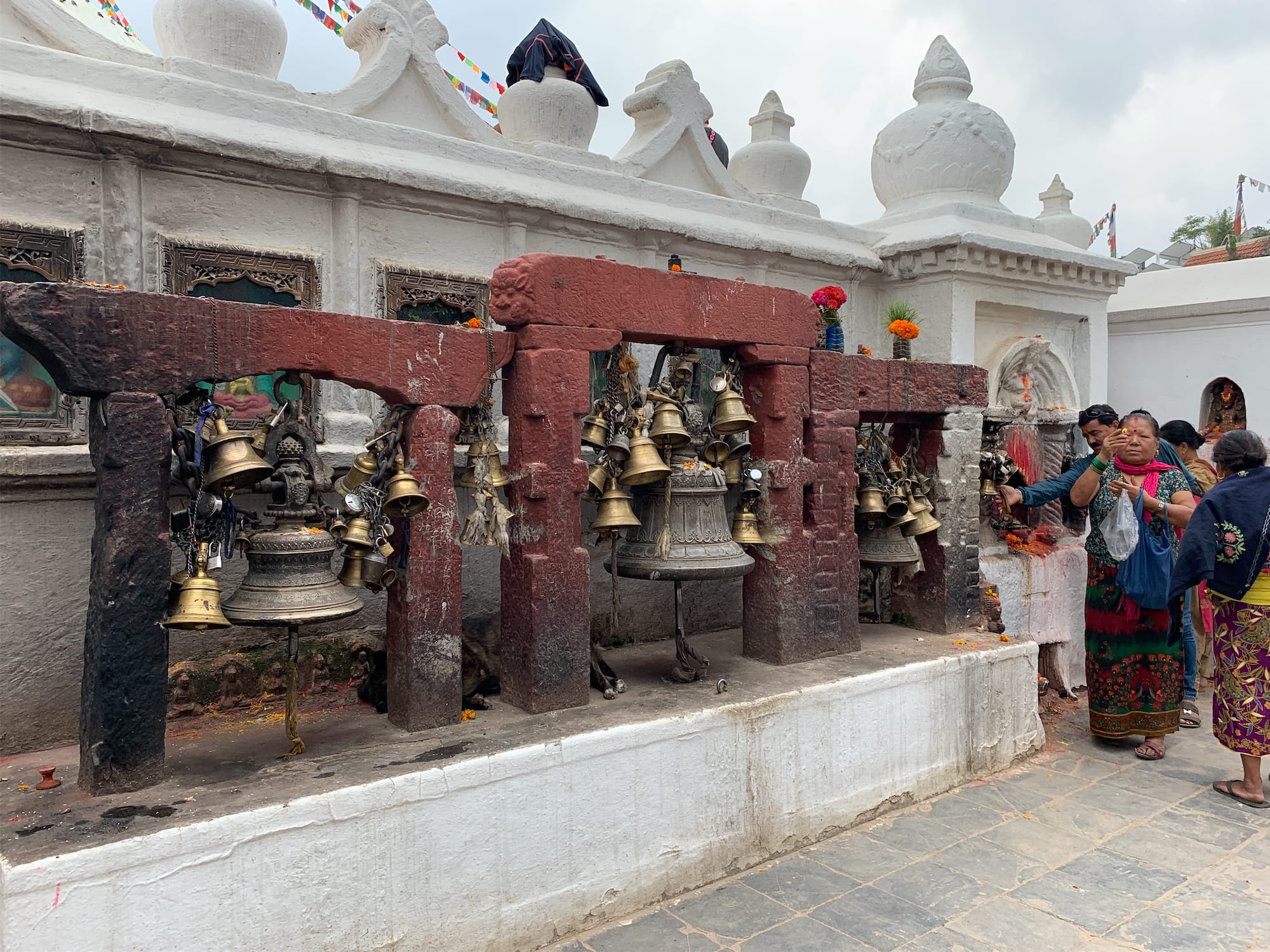
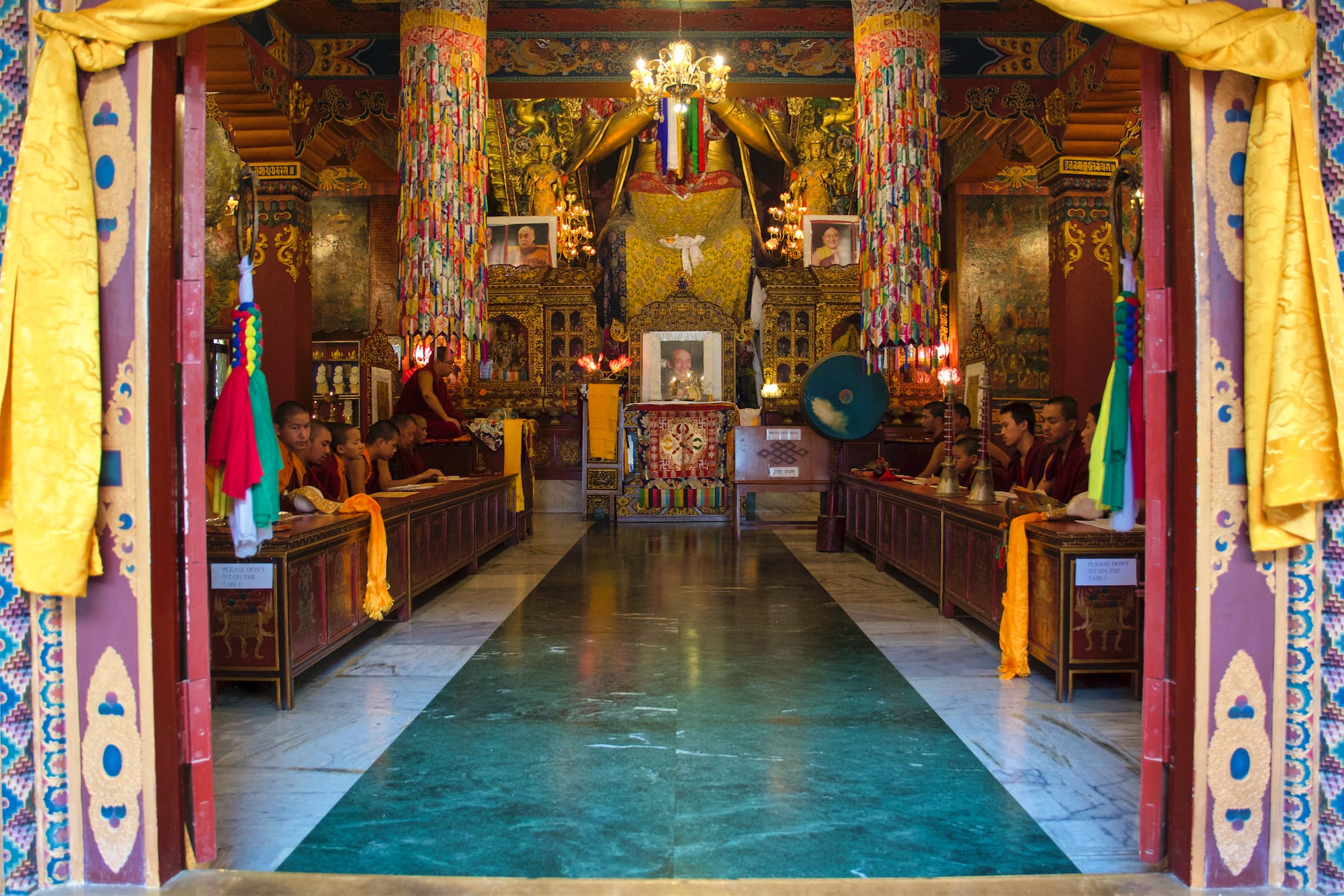
Around the stupa there are all the typical elements of the Buddhist cult, the classic prayer wheels, in continuous movement as the faithful and monks pass by wrapped in classic orange tunics. We listened to them recite the psalms from a temple overlooking the stupa and intent on feeding the numerous pigeons that crowd the path along the kora together with the faithful. All the buildings surrounding the area have in fact adapted to the imposing stupa, following its perfectly circular profile.



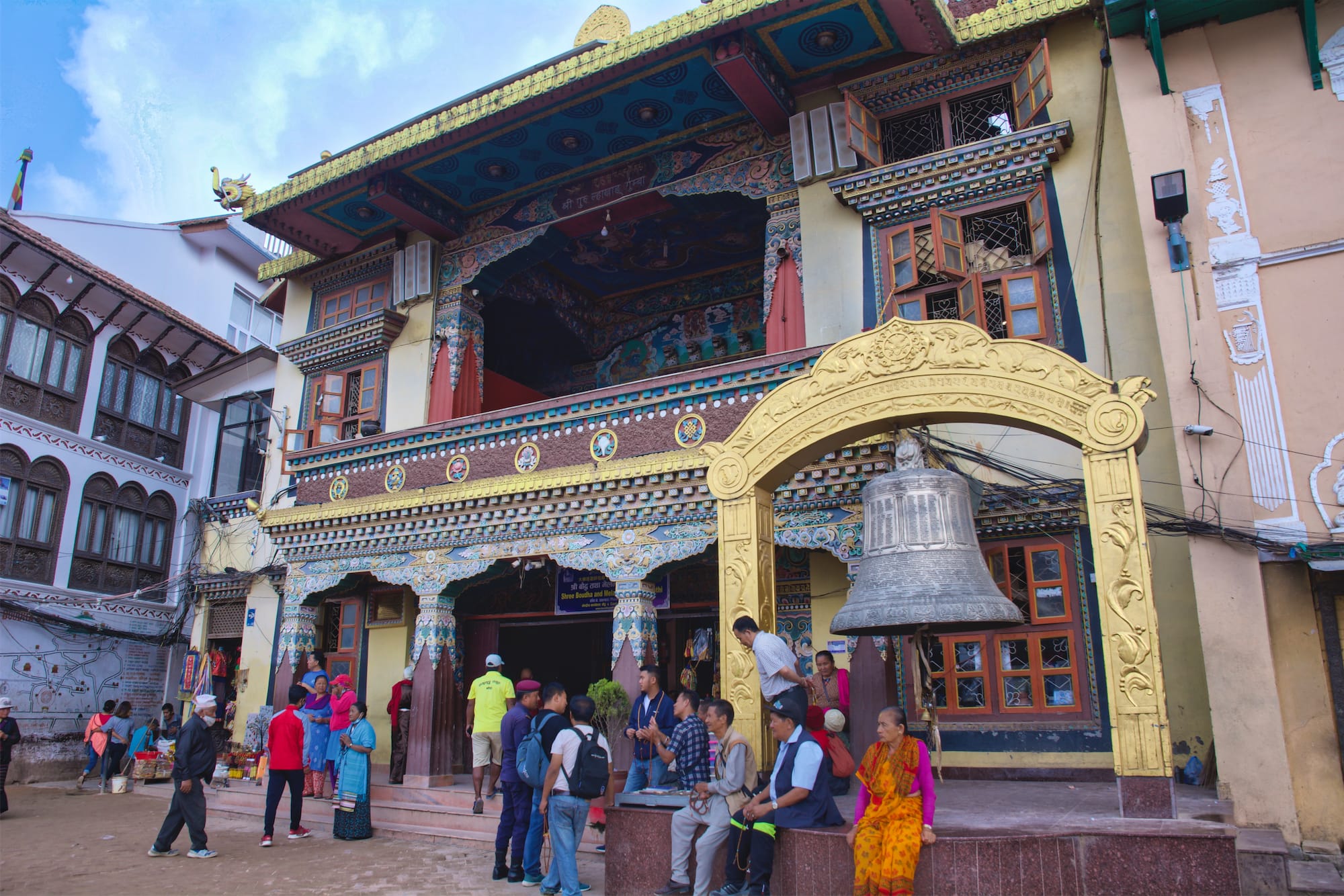
All around, you will find small monasteries, chapels and shops selling religious articles. After the classic ritual photos, we also went into secondary alleys, where we found unusual monuments, such as this modern depiction of the Buddha in a garden in the middle of the town.
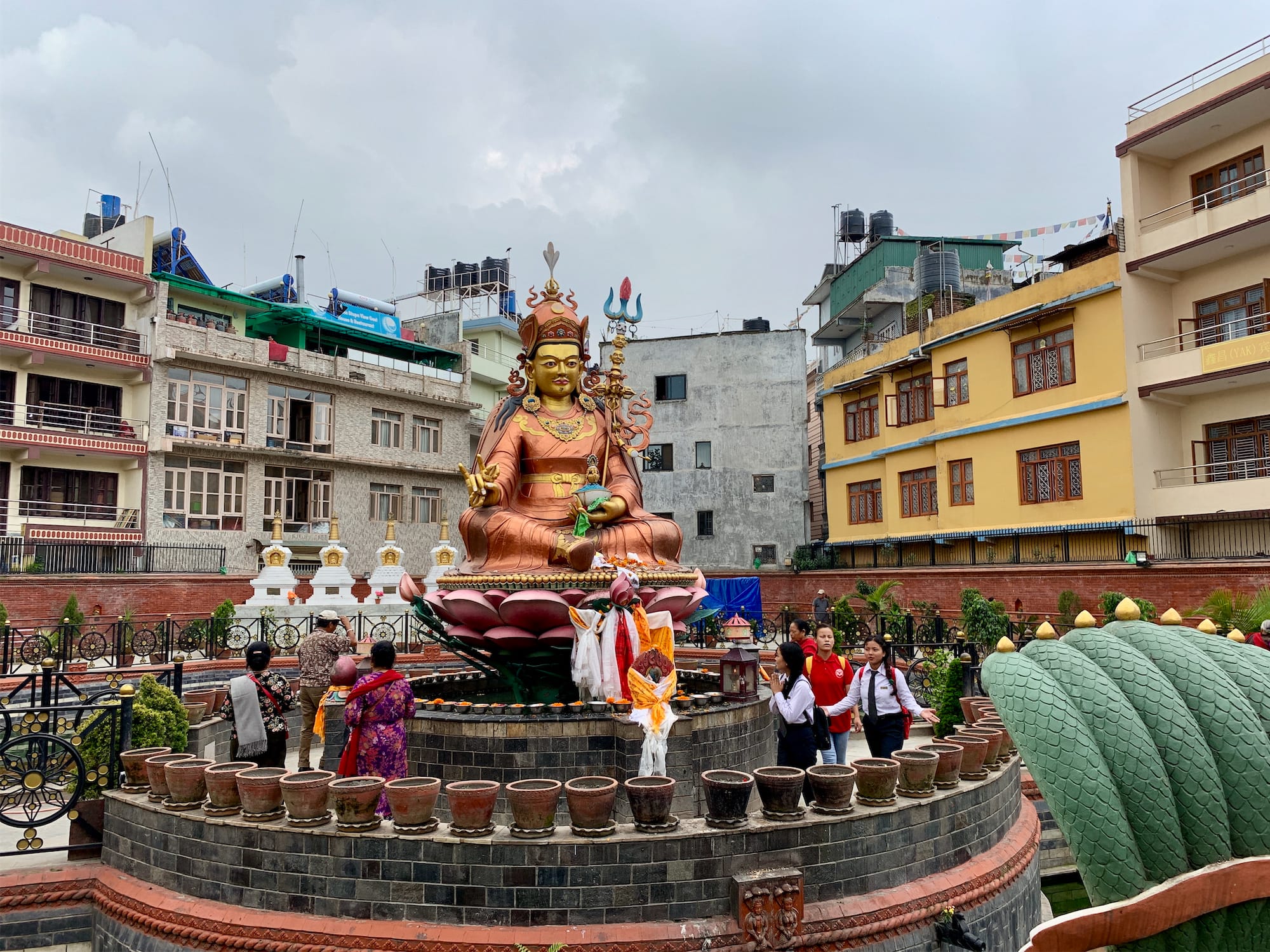
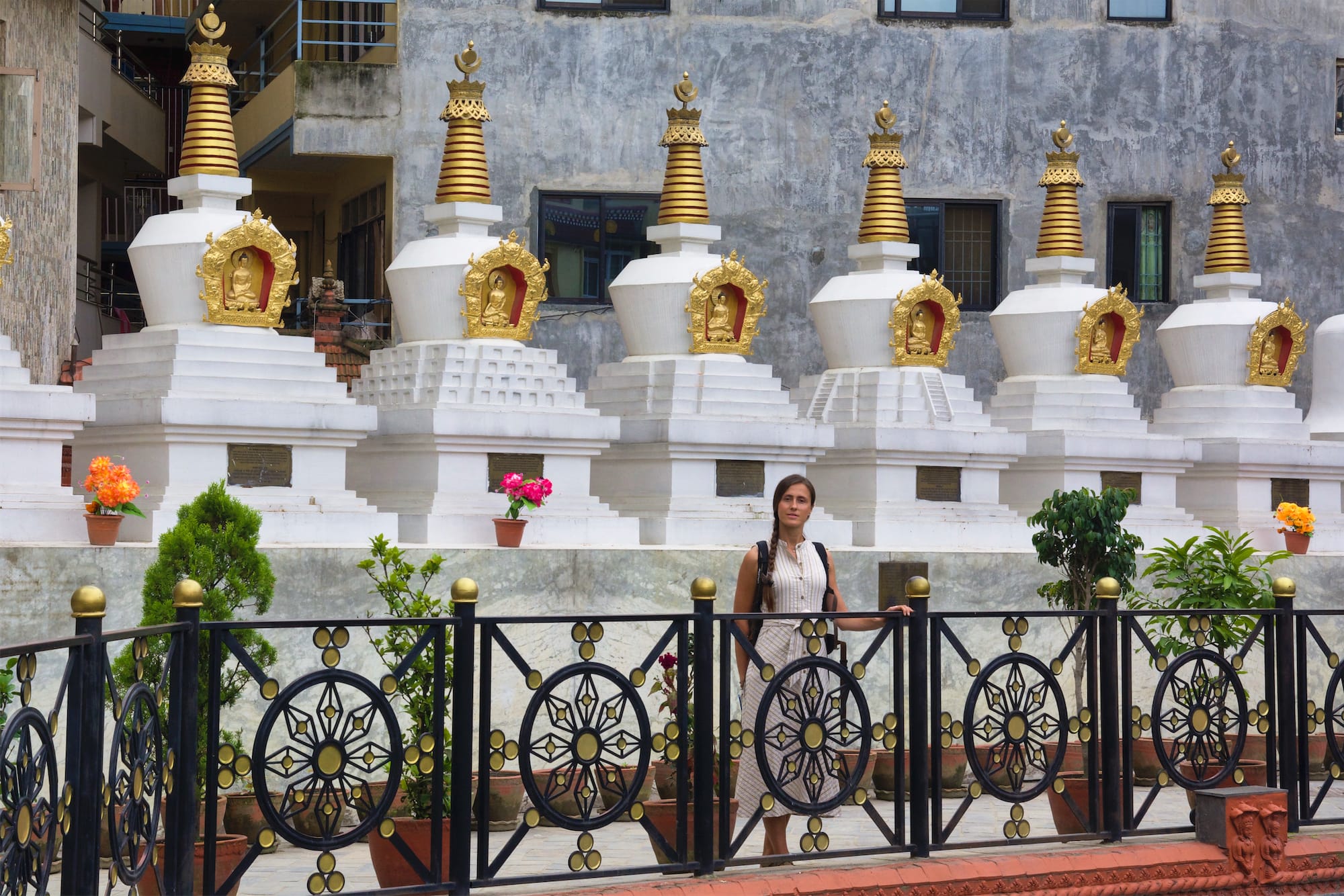
Pashupatinath
We reached this important Hindu complex on foot from Bodhnath. The route is absolutely doable (about 2km) and we also met unusual passers-by along the way.

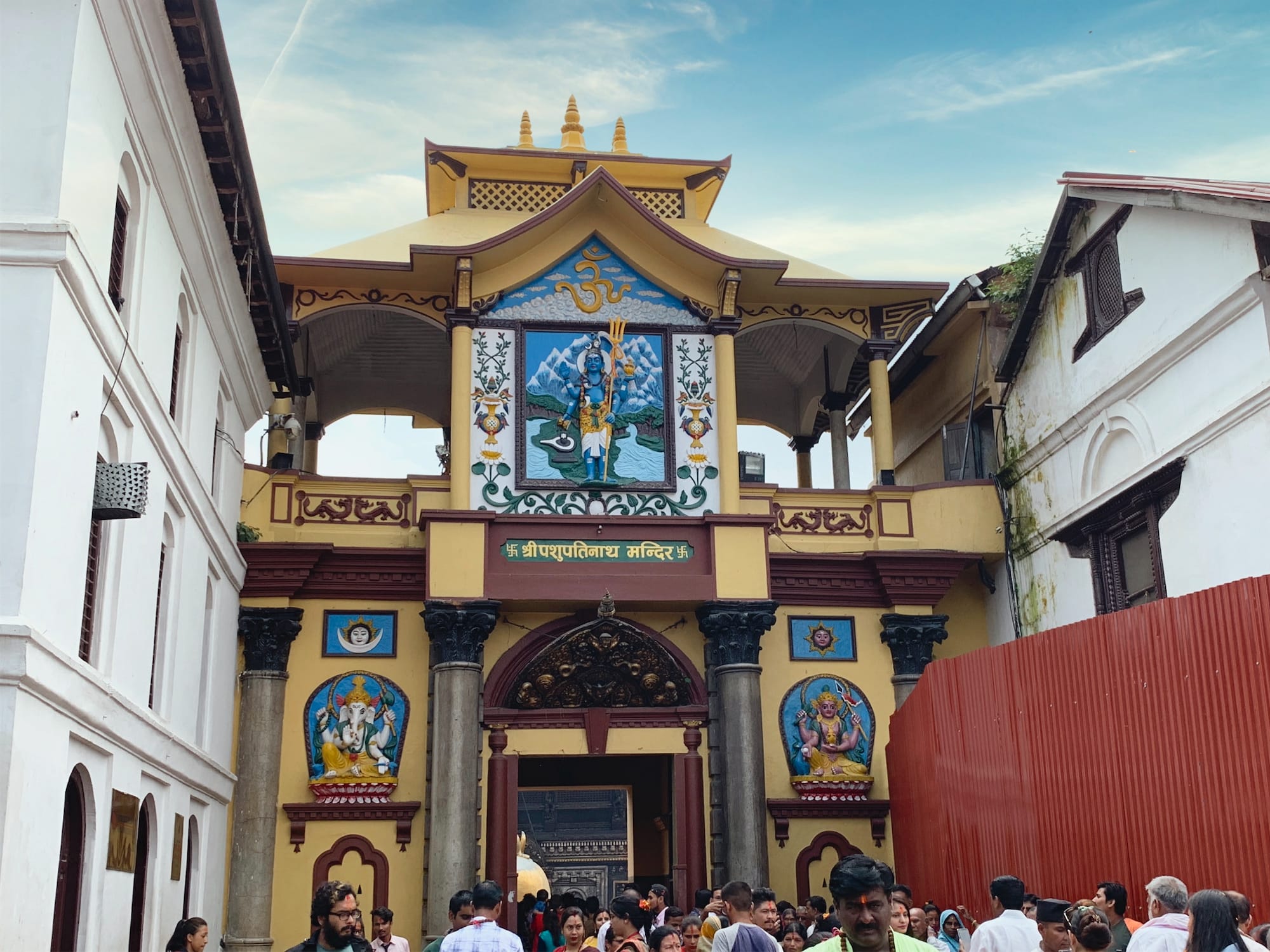
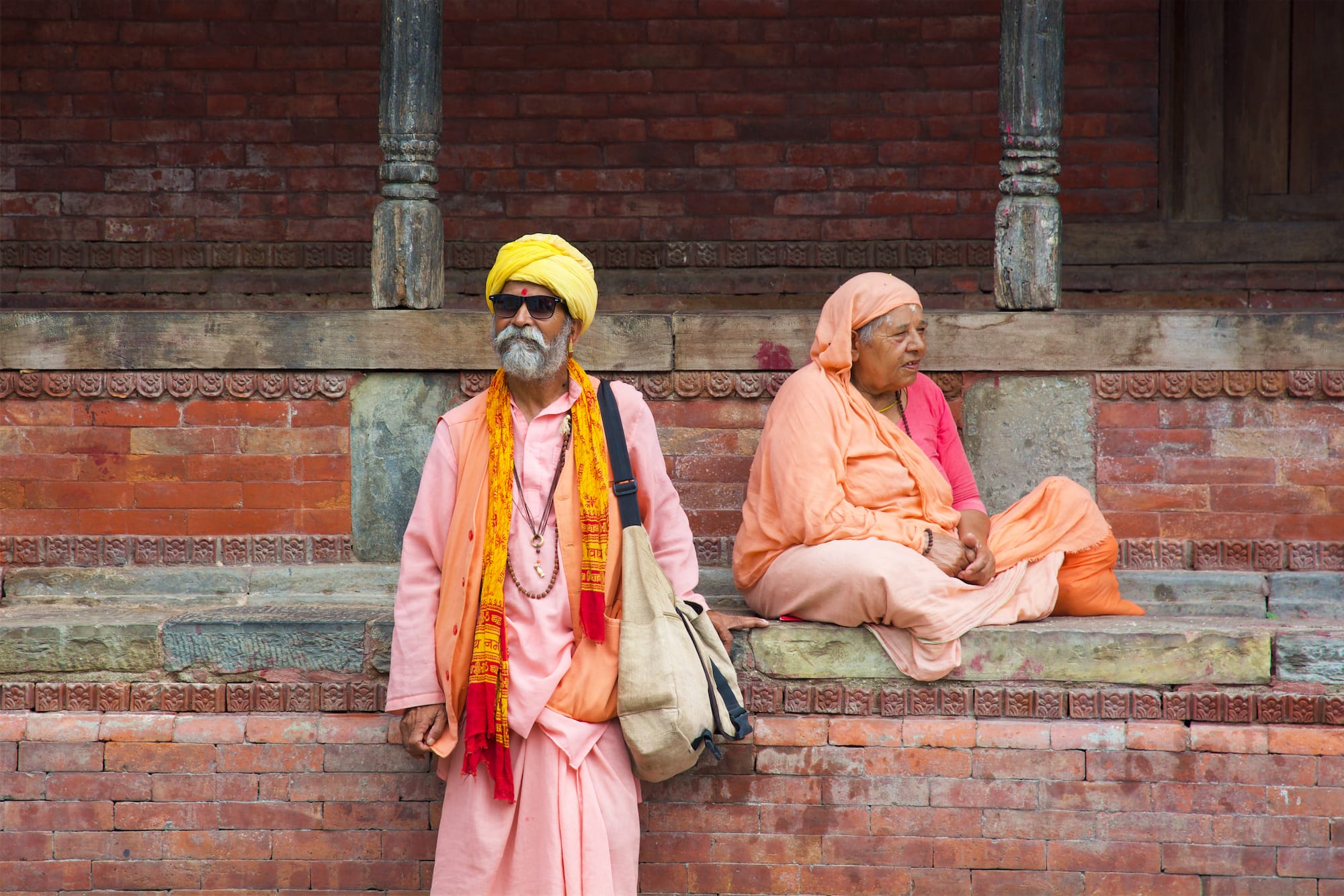

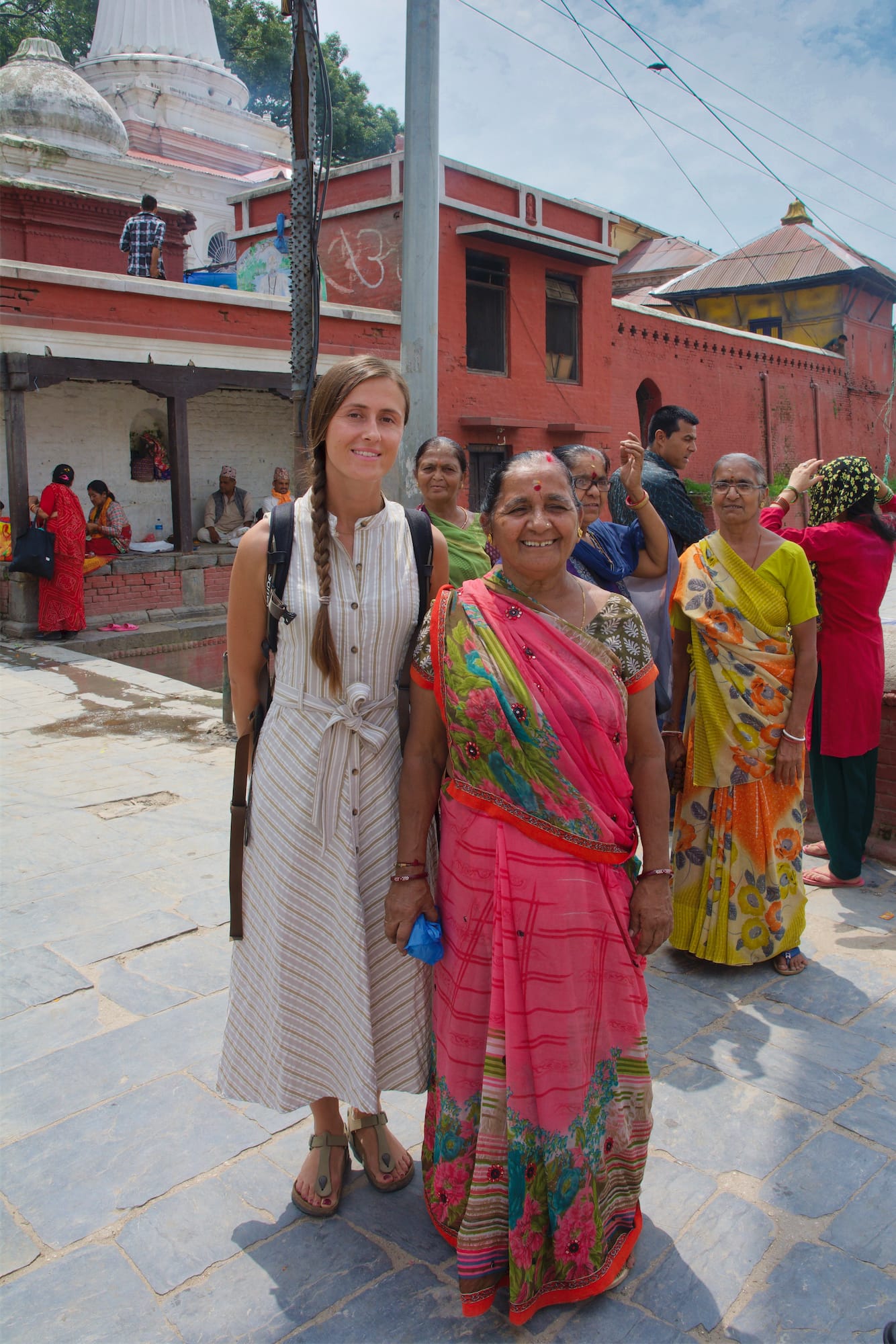

The Pashupatinath Temple stands on the banks of the sacred Bagmati River, the Nepalese equivalent of Varanasi, on the Holy River Ganges. Non-Hindus are not allowed to enter the main temple, but the complex of Shivaite shrines, lingas and ghats is truly unmissable and will touch your emotional side.
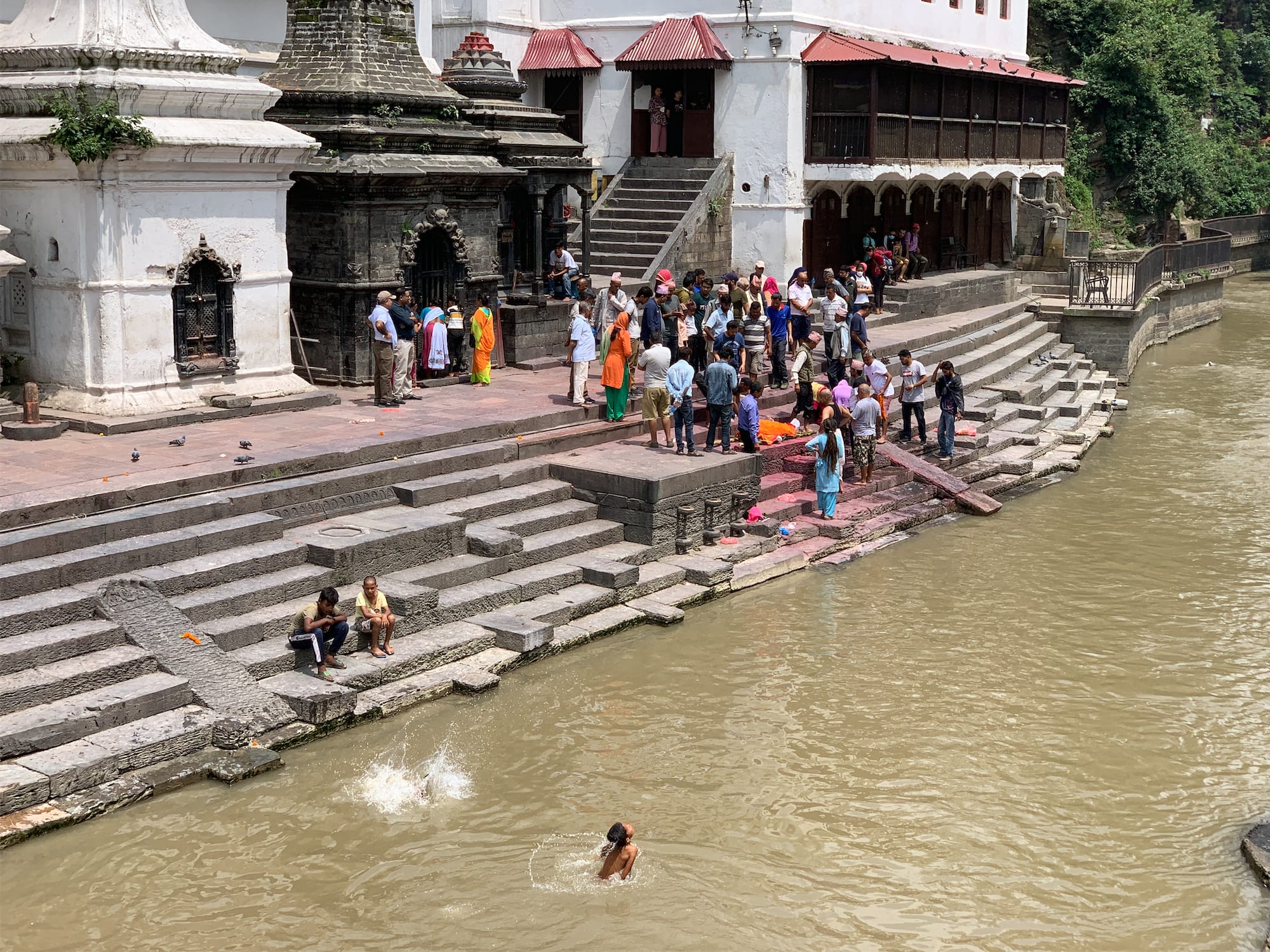

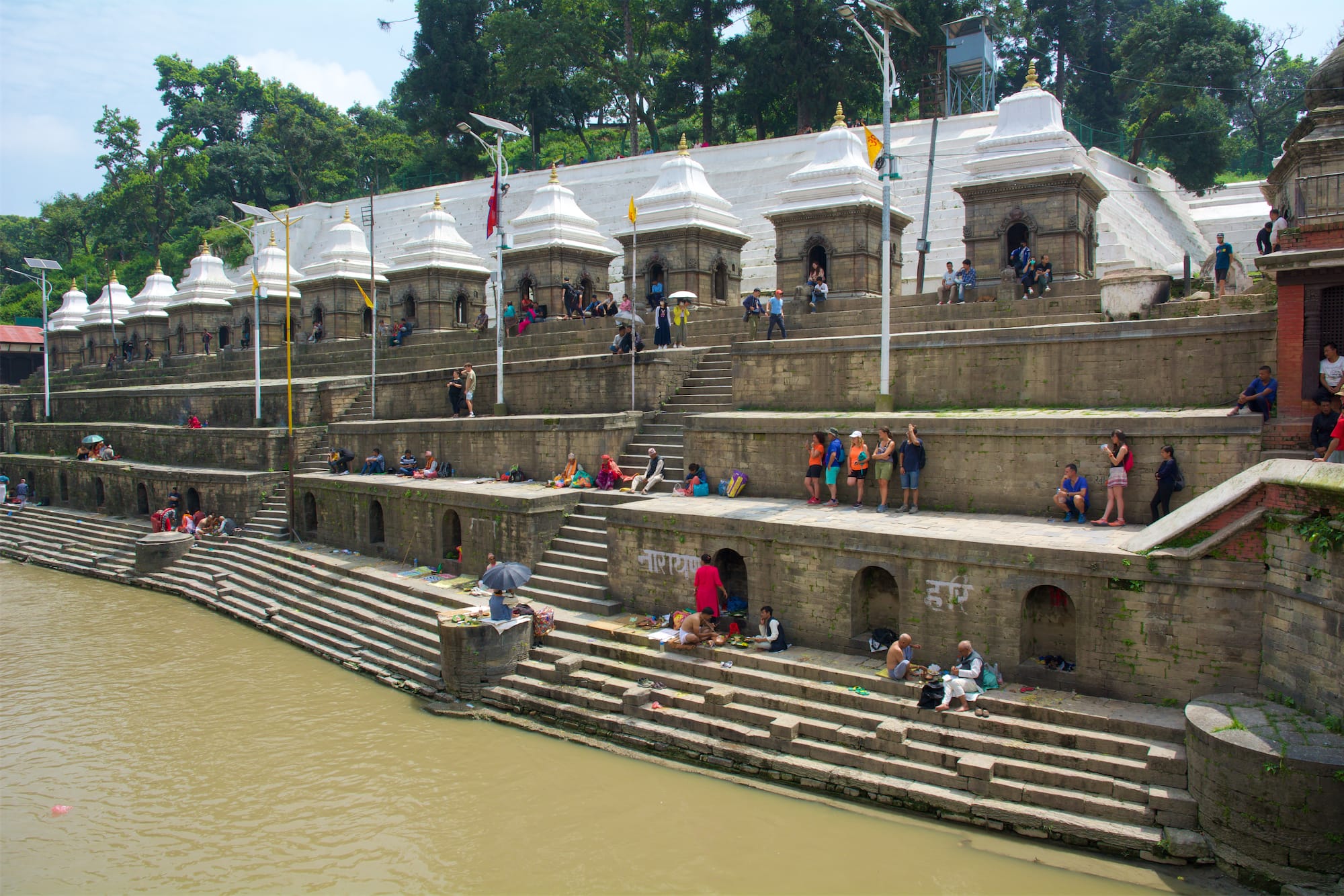
The ghats, which in Hindi means "stairway leading to a stream", are the place where the dead are cremated. We were struck by the composure and the different relationship with death. In the same waters where these ceremonies are celebrated, children play diving nearby. Two pedestrian bridges cross the river to reach the shore on purpose, where on a series of terraces there are numerous small shrines of Shiva, consisting of a single room. Going up the flight of stairs that runs alongside these sanctuaries, you reach an observation point on the whole complex.

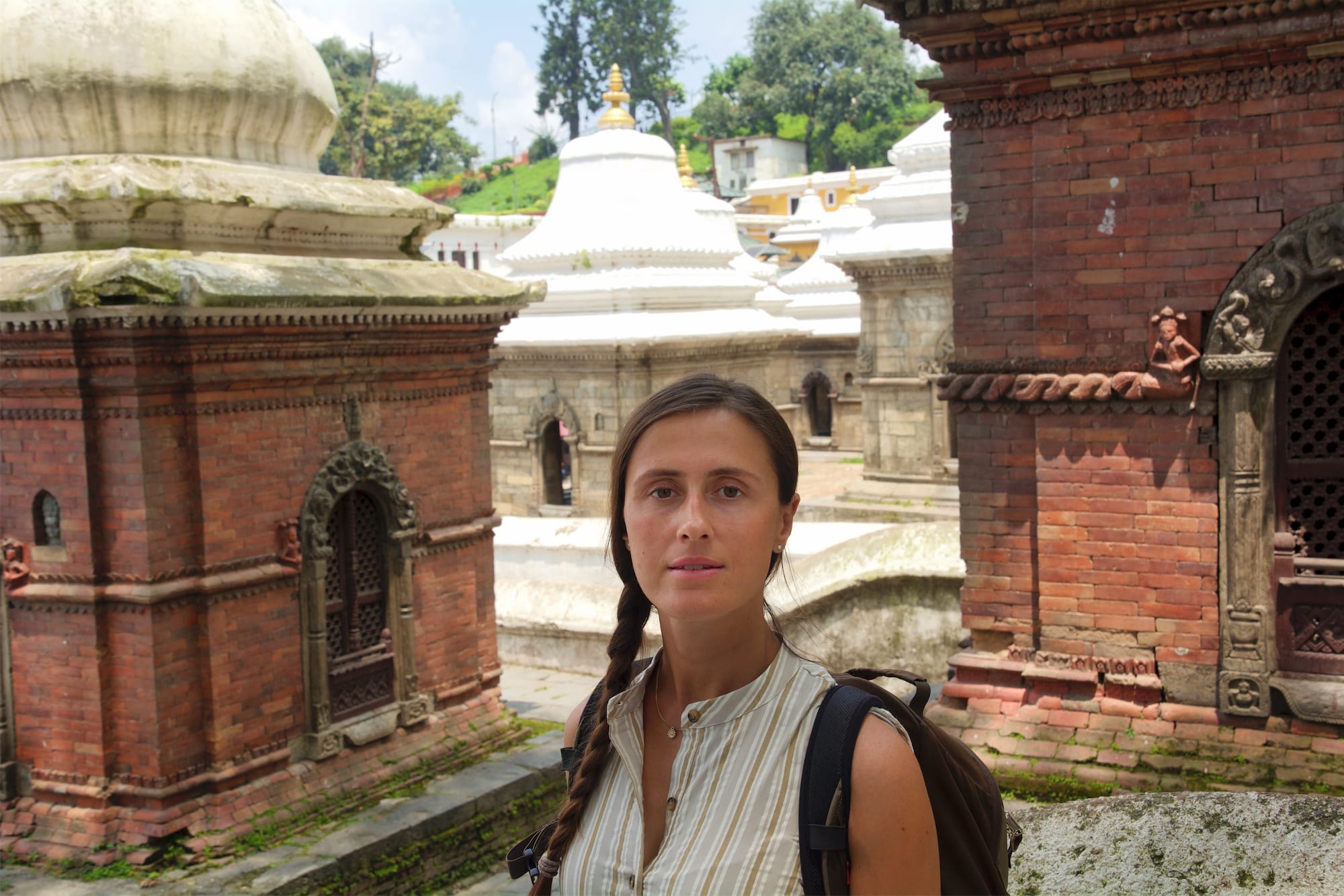
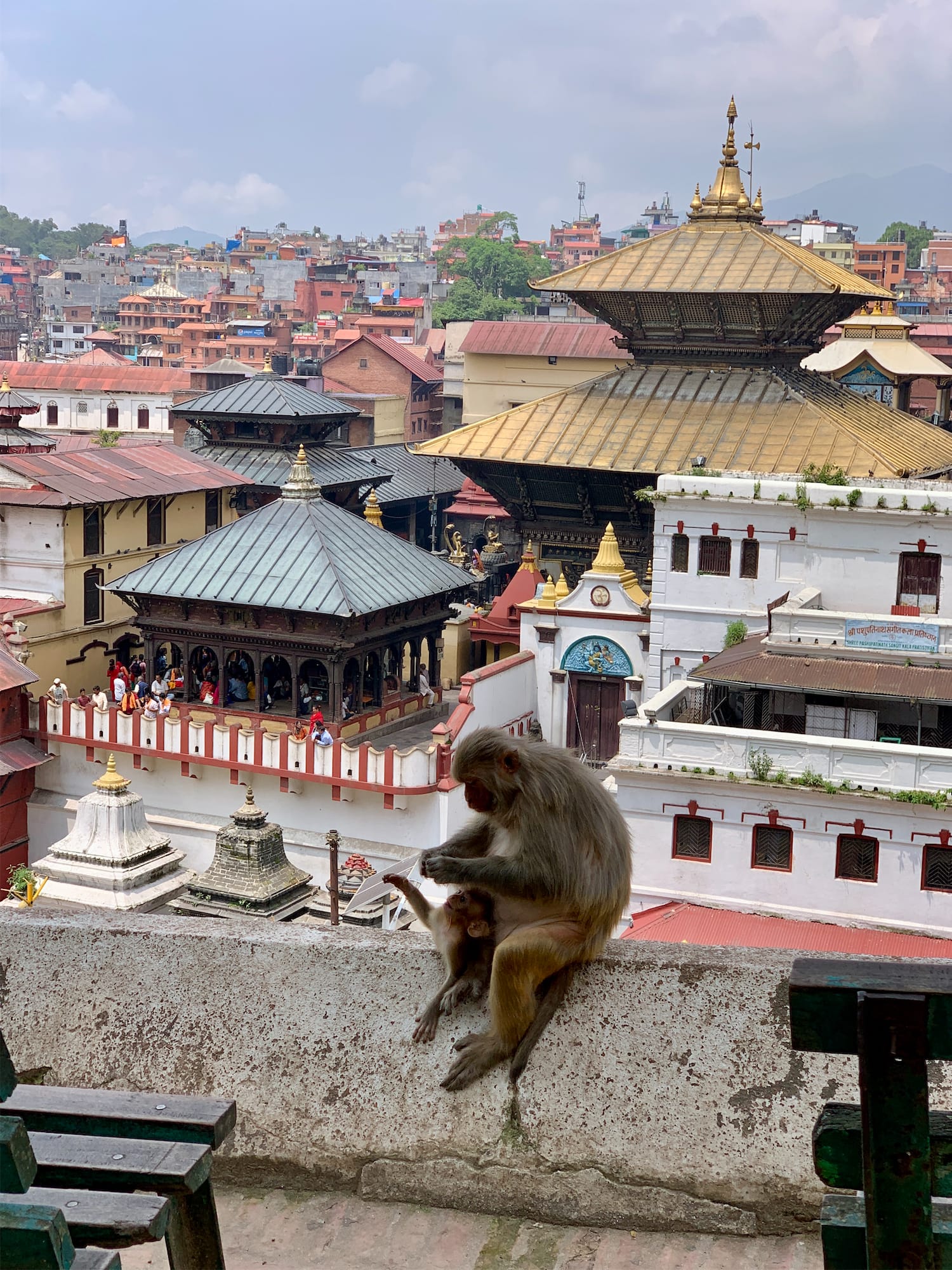
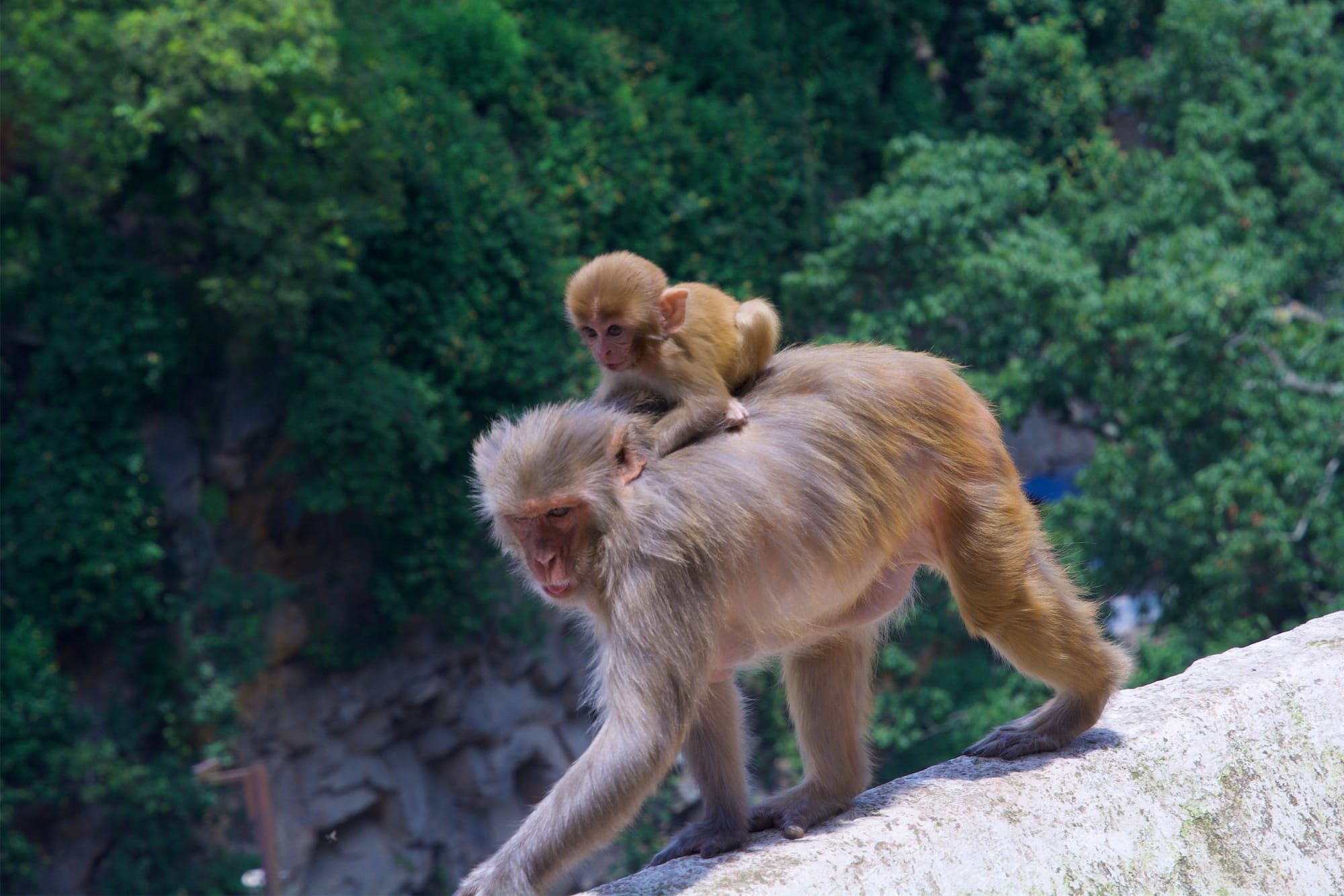
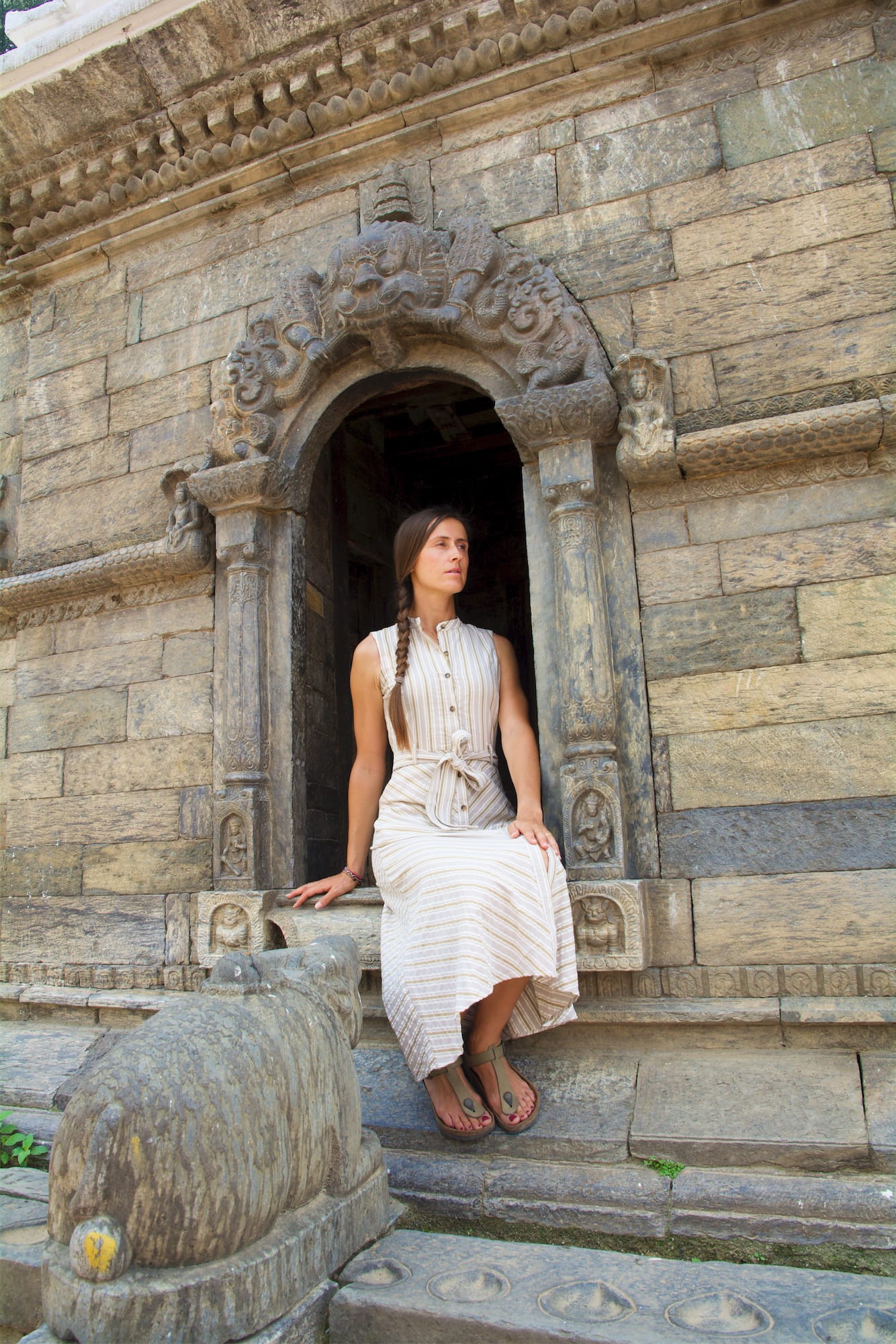

Later we retraced our steps, arriving near the eastern ghats. Here we found Sadhu (ascetics), with colorful robes and faces, who are photographed in exchange for some coins.
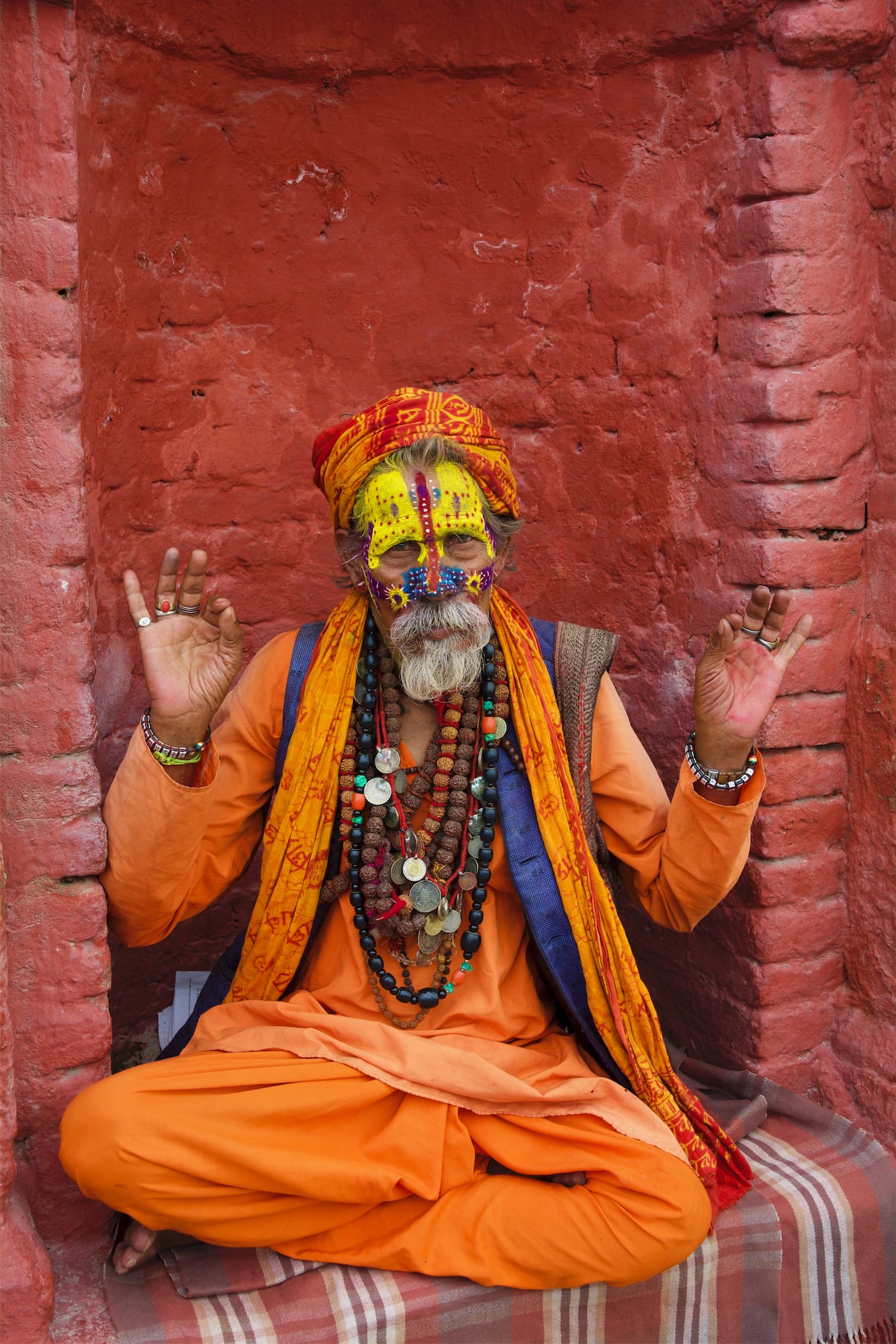
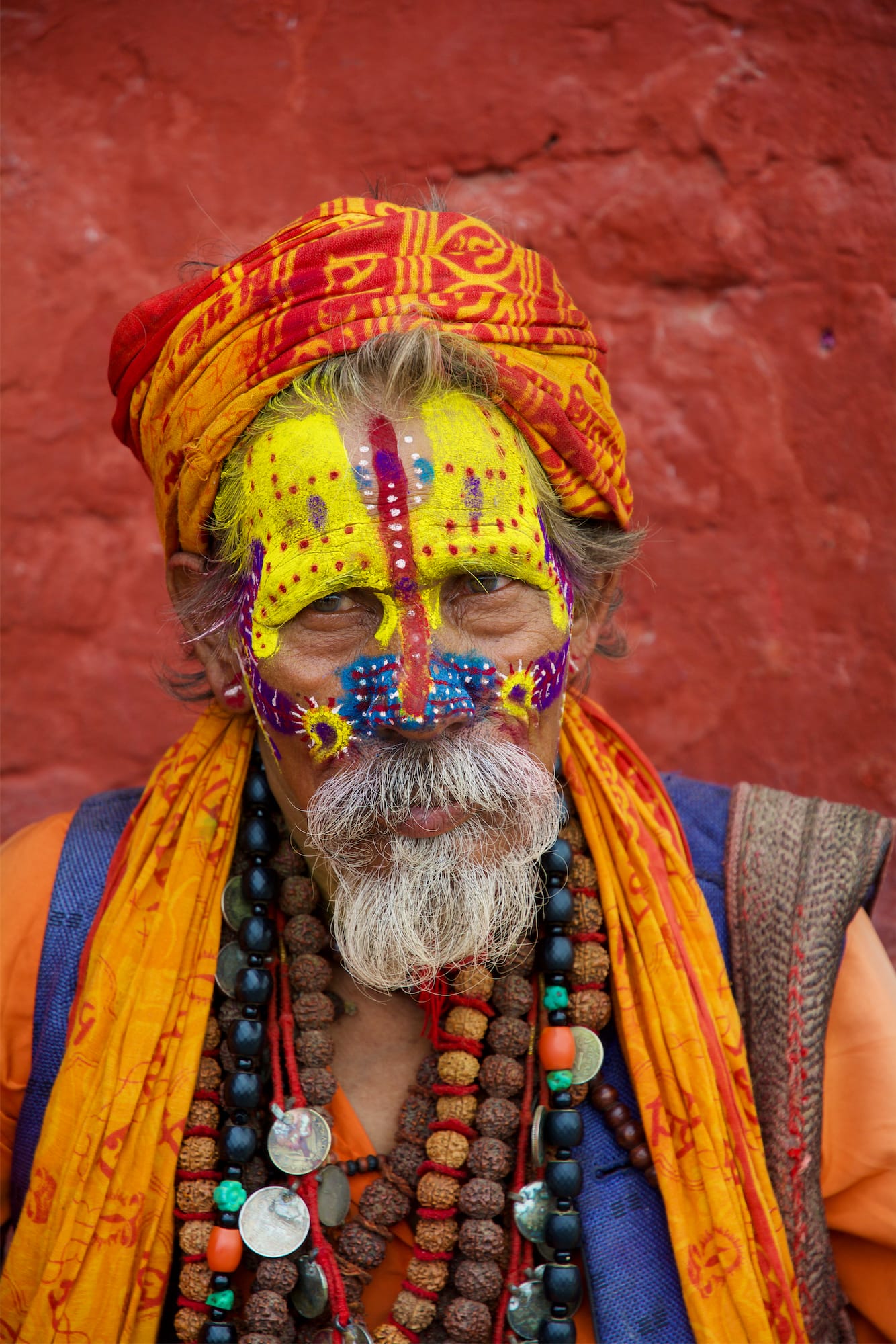
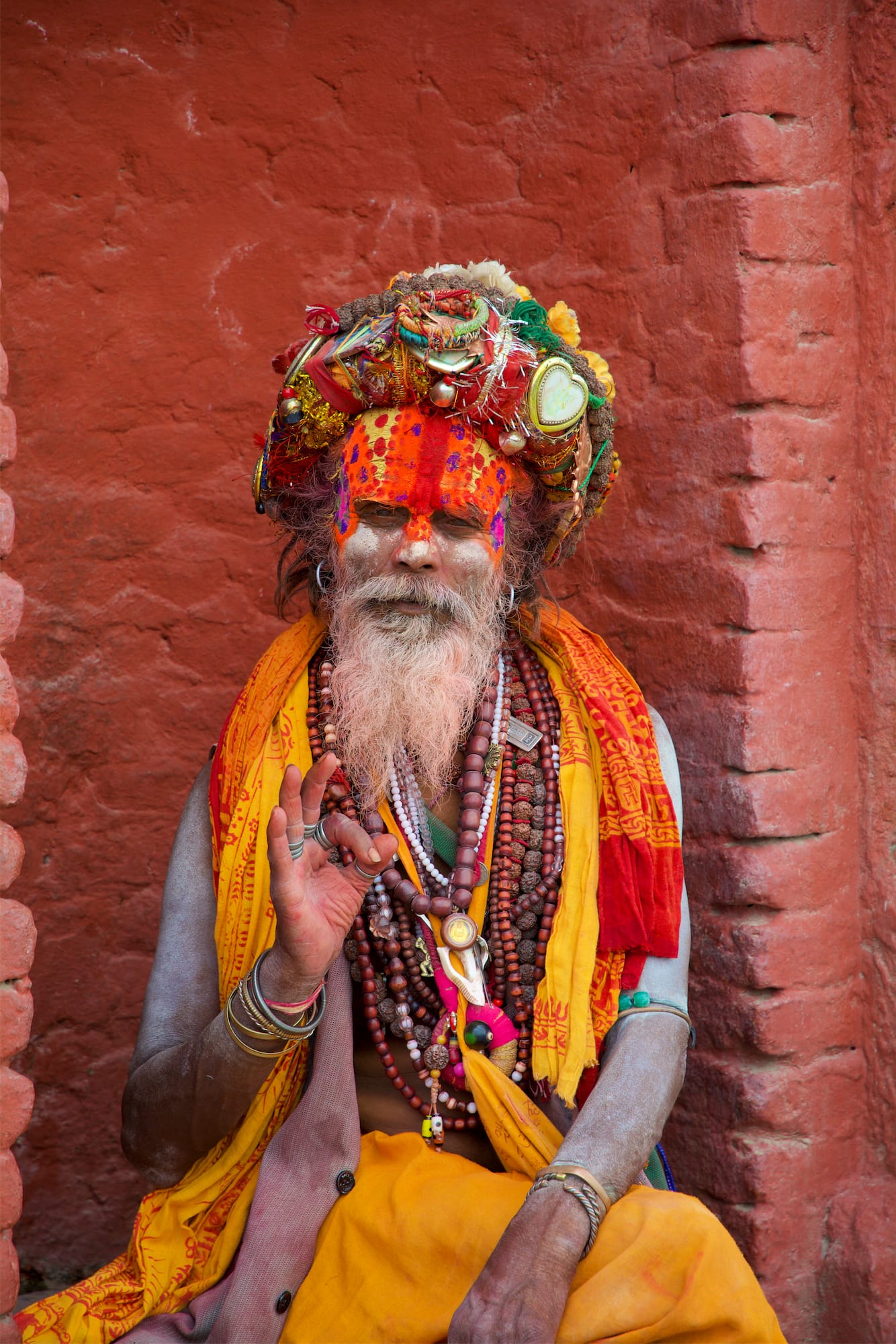
The exit from the complex from the south, takes place through an immense market, full of stalls with religious articles.
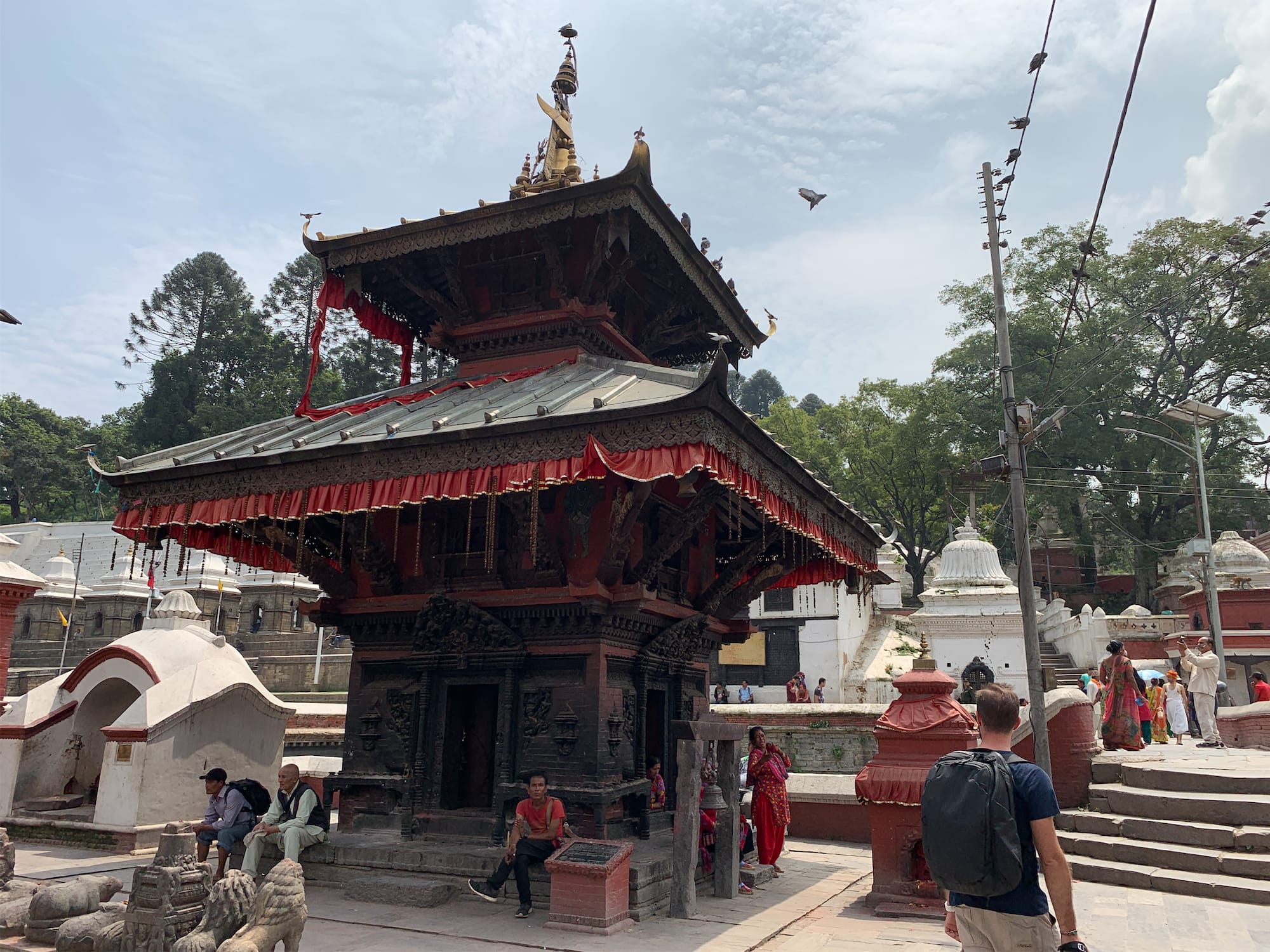
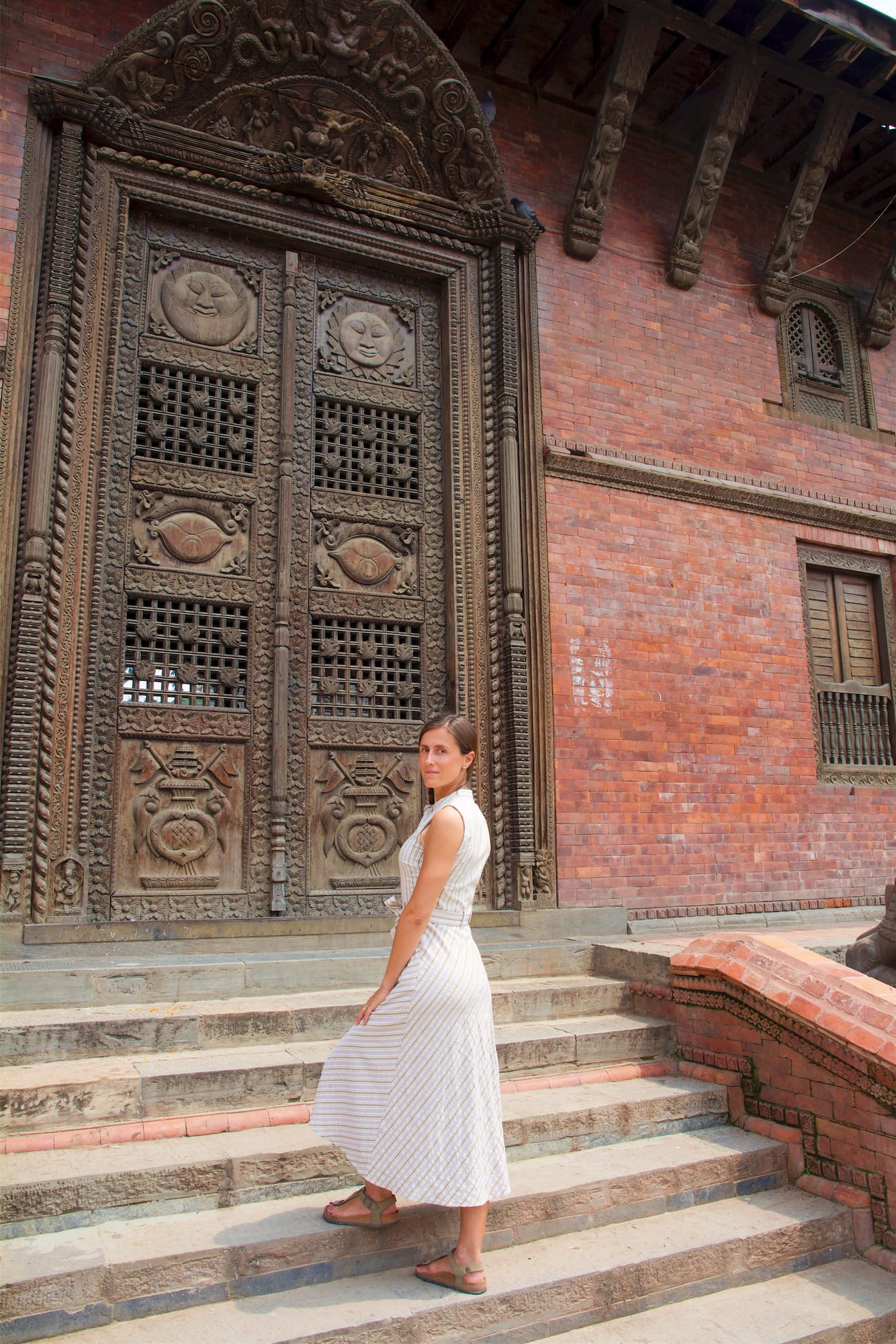
Patan
Then we took the taxi to reach the last stop of the day, the city of Patan. We decided to visit it on a special day: August 23rd, during the feast of Krishna Janmastami (celebrated every year on the 15th day of the waning moon in the month of Bhadra, i.e. August / September). This festival celebrates the birth of Krishna and devotees gather in large numbers around the temples dedicated to him, to offer their prayers.
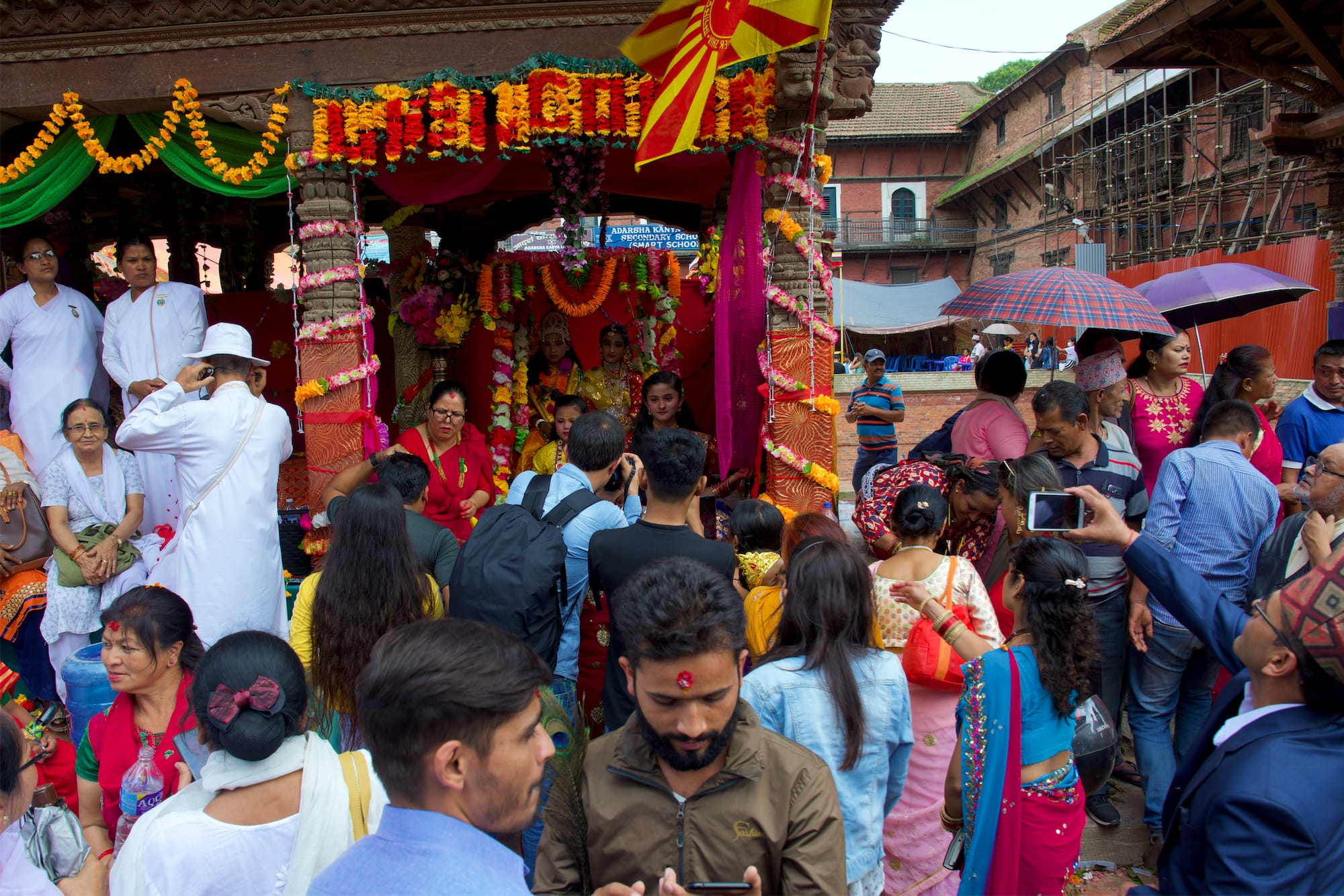
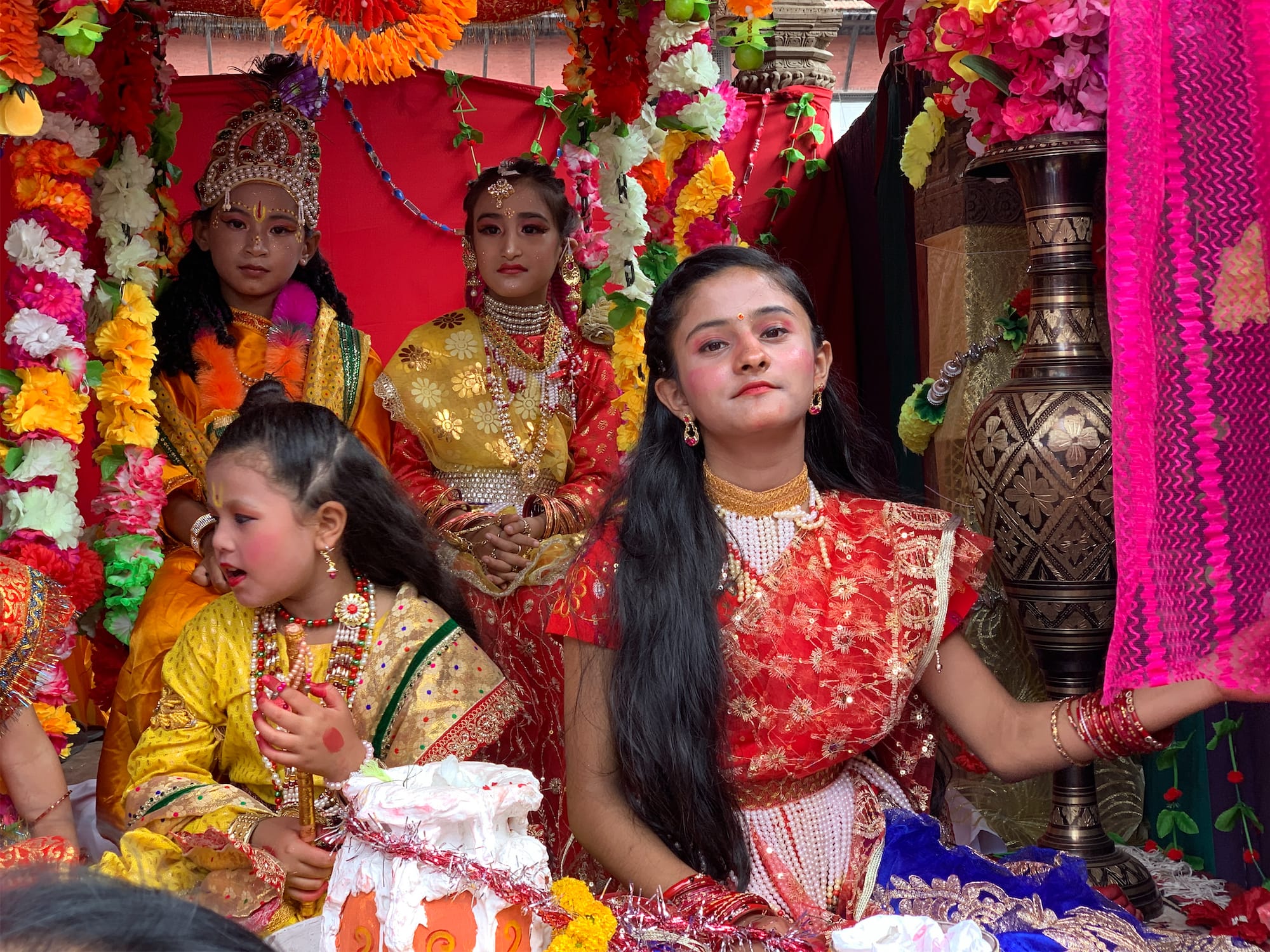

We walked up to Durbar Square and I assure you that the streets were really packed. We immediately felt part of this colorful and lively celebration among the numerous people queuing to go up to the Krishna Mandir temple. The three-level temple is built with carved stones and is an impressive architectural masterpiece. Admission is allowed only to Hindus. The square is also overlooked by other temples, which we did not have the opportunity to visit with the party in progress.
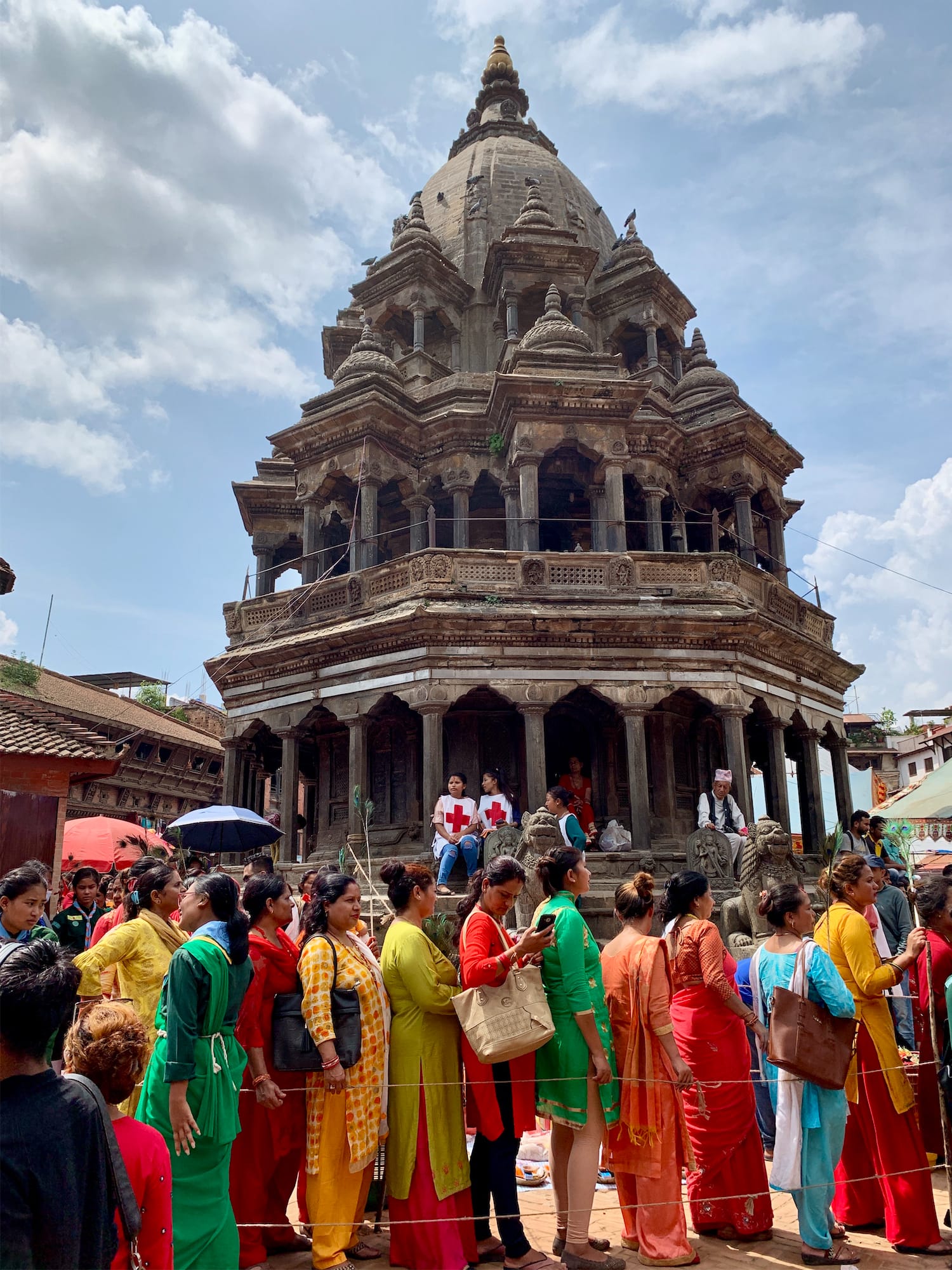
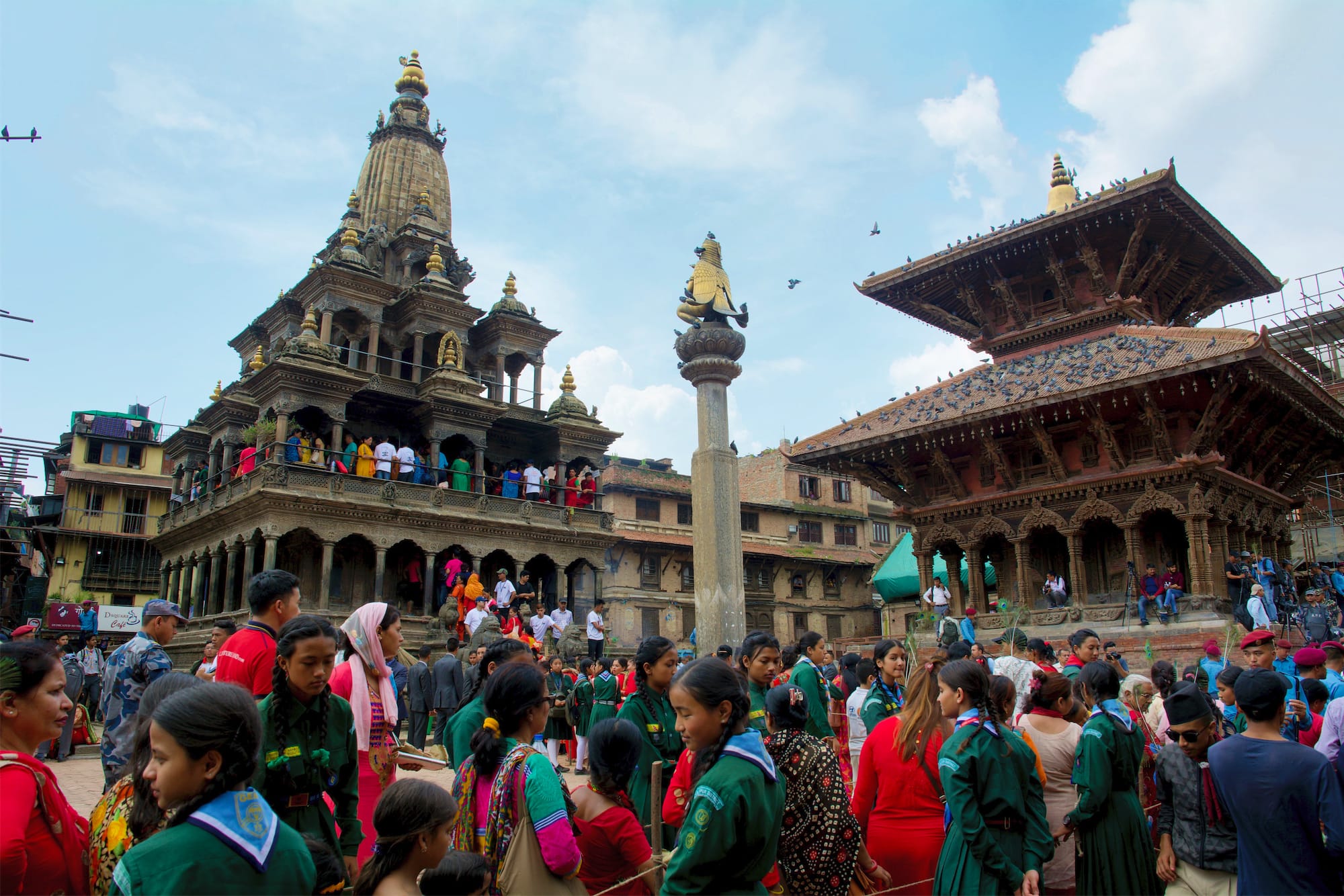
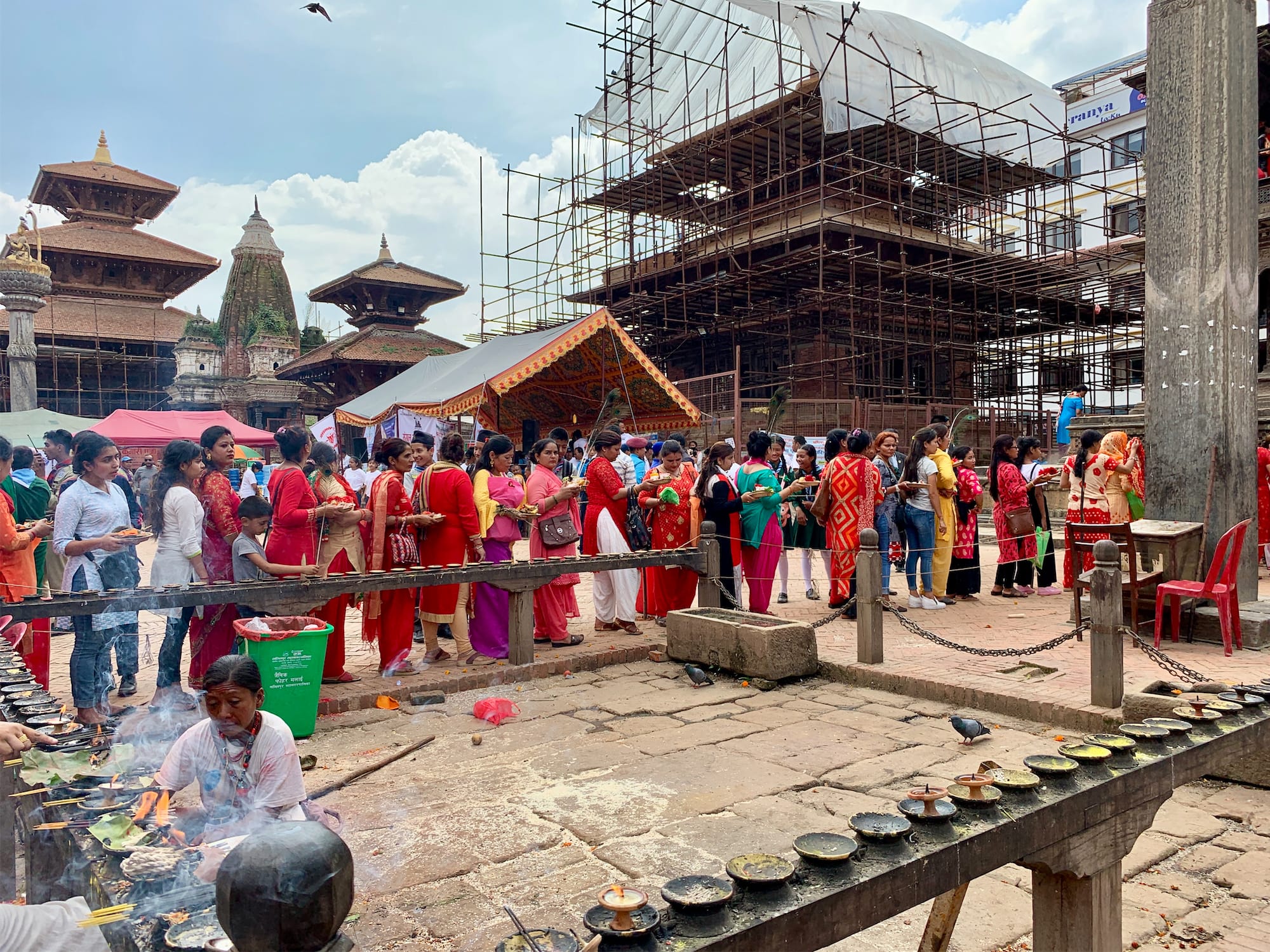

The atmosphere and the participation of all those present was easily palpable and reviewing the shots of that day, we feel again catapulted into that celebration, among the bright colors of the splendid saris of the women, the drums played with joy and the children dressed up for the party.
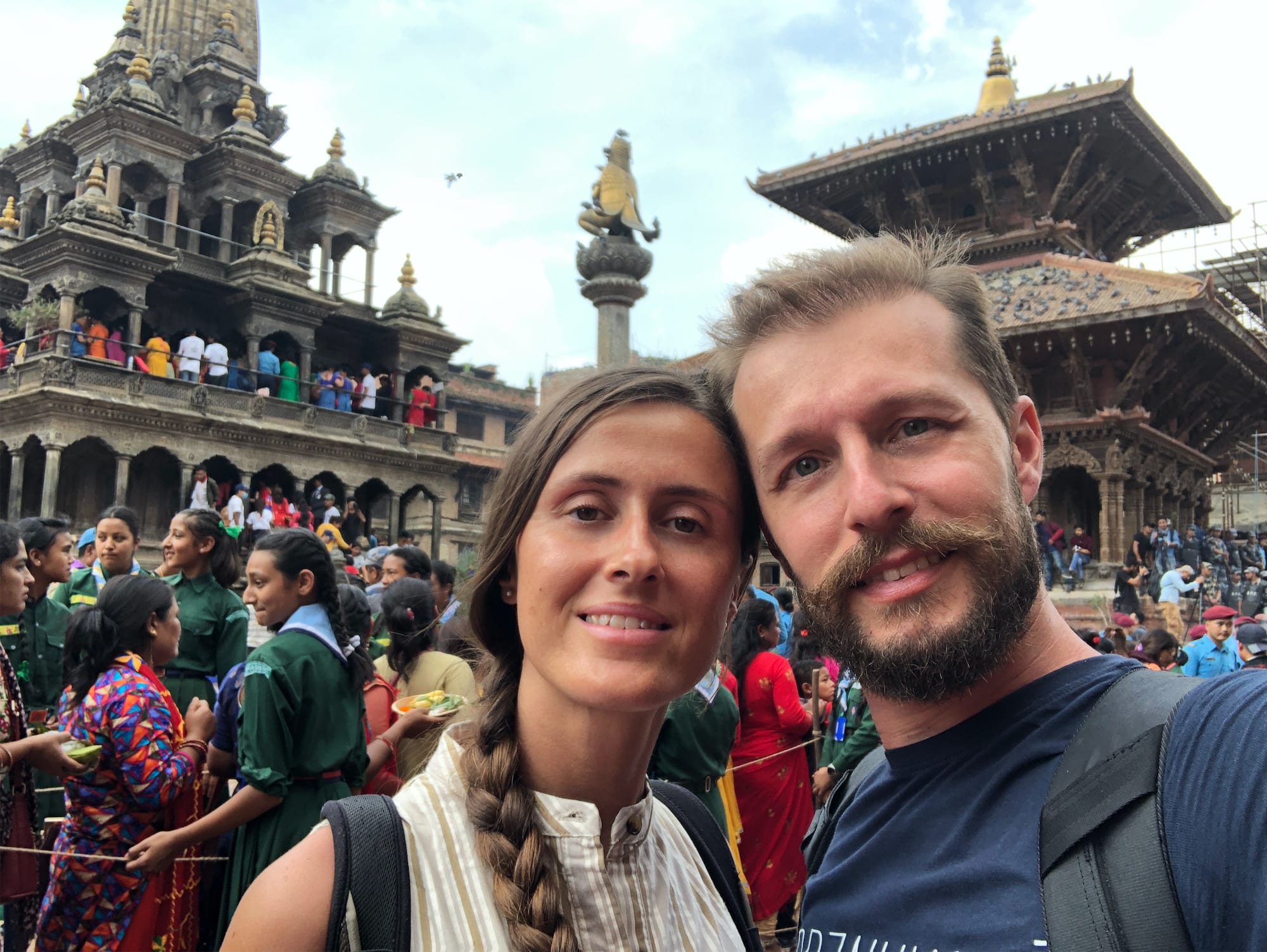
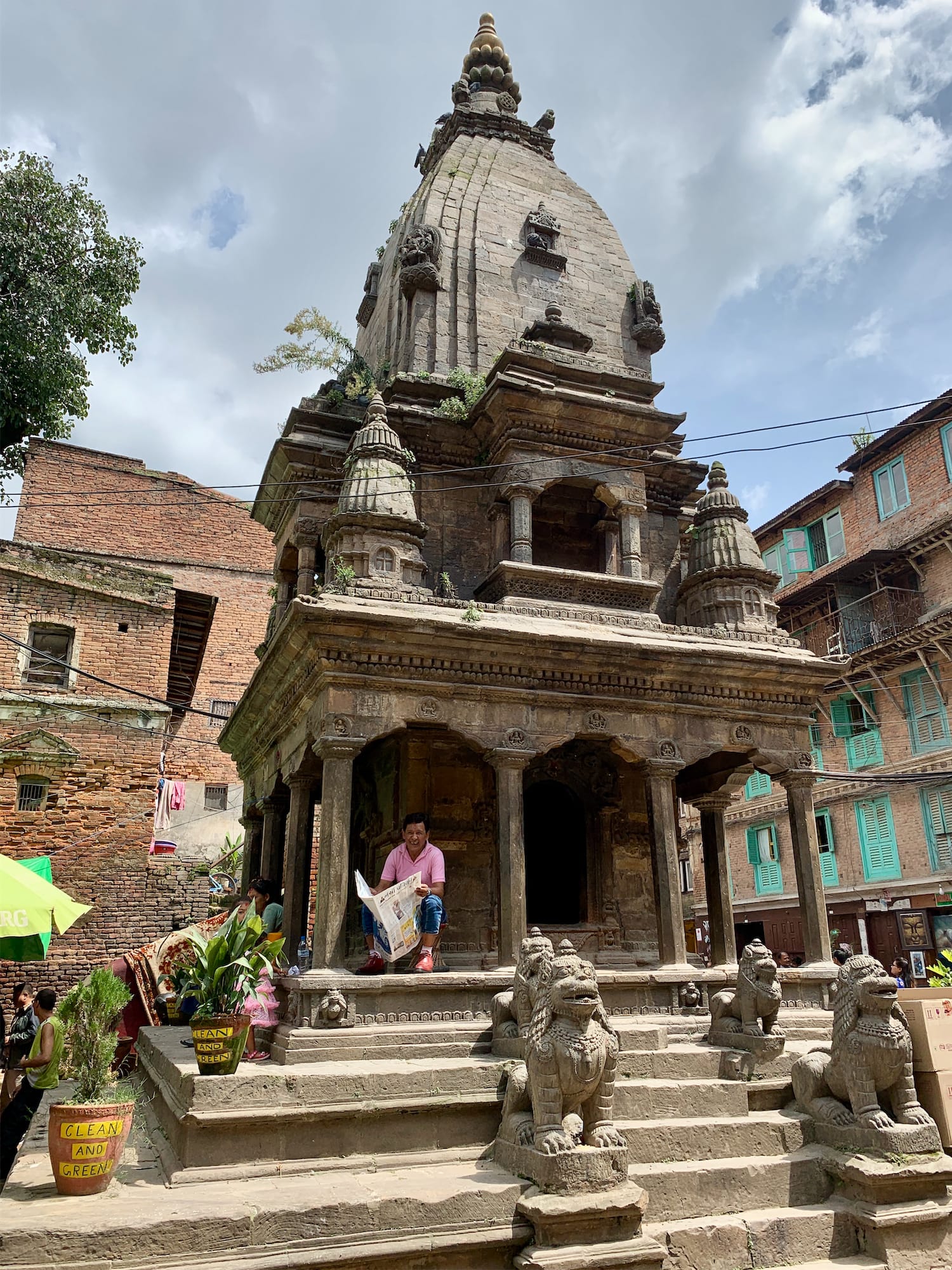


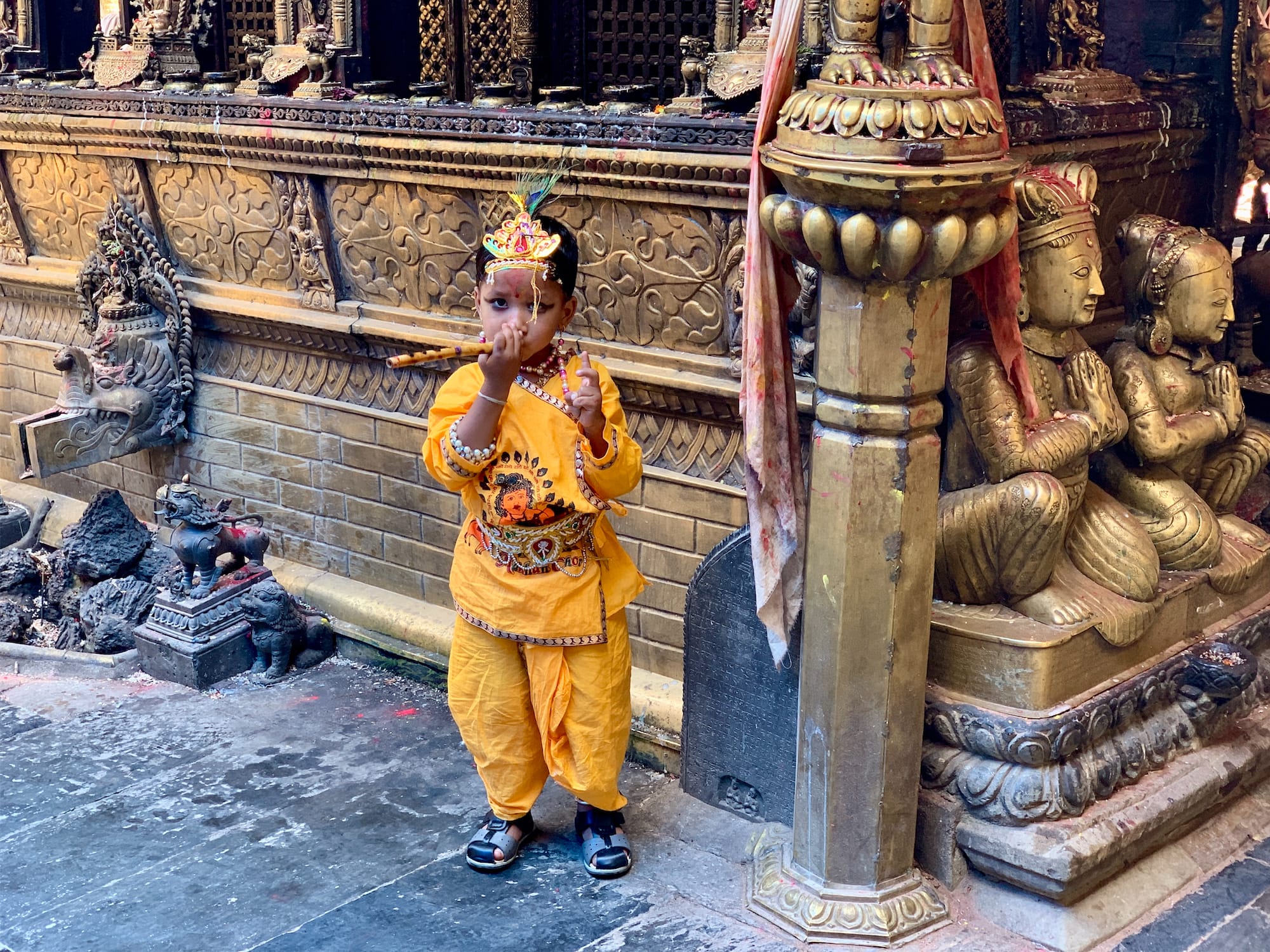
After appreciating the beauty of the square, we moved away from the center to reach the Golden Temple (Kwa Bahal). The main temple is accessed through a small stone door, which gives access to the internal courtyards. In the center of the elephant-protected main courtyard is a splendid temple, covered in shimmering gold foil, surrounded by two-story side shrines.
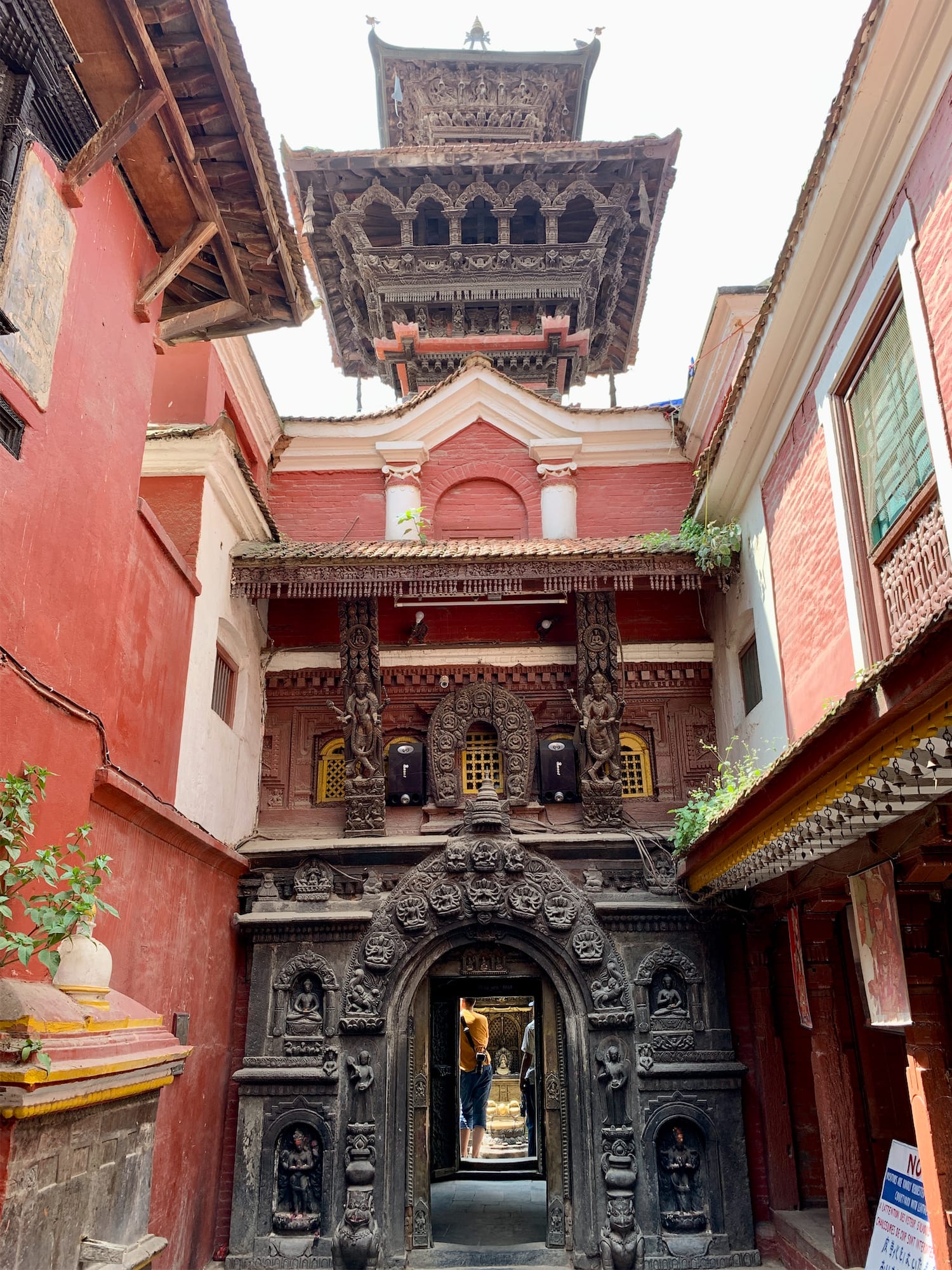

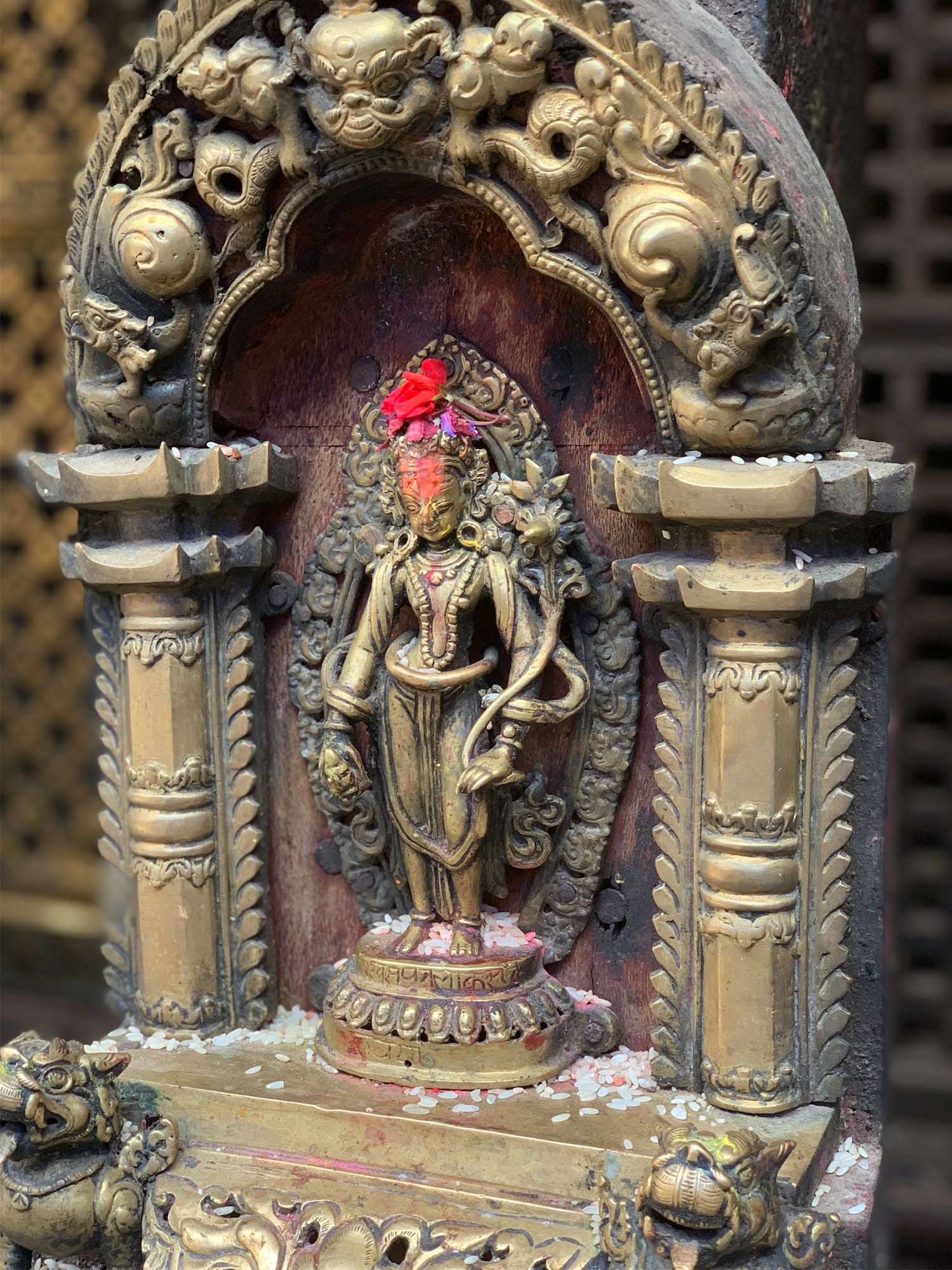

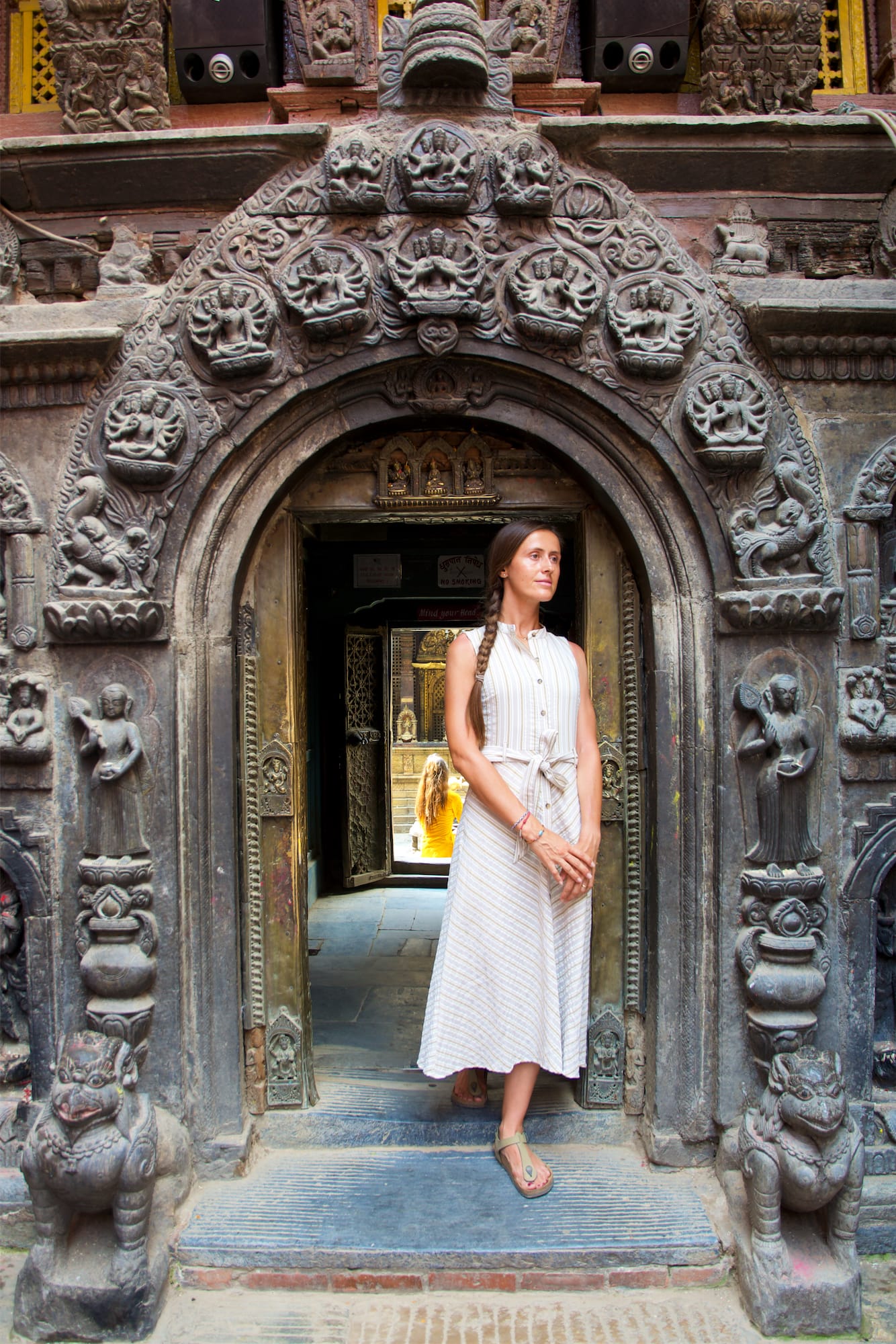
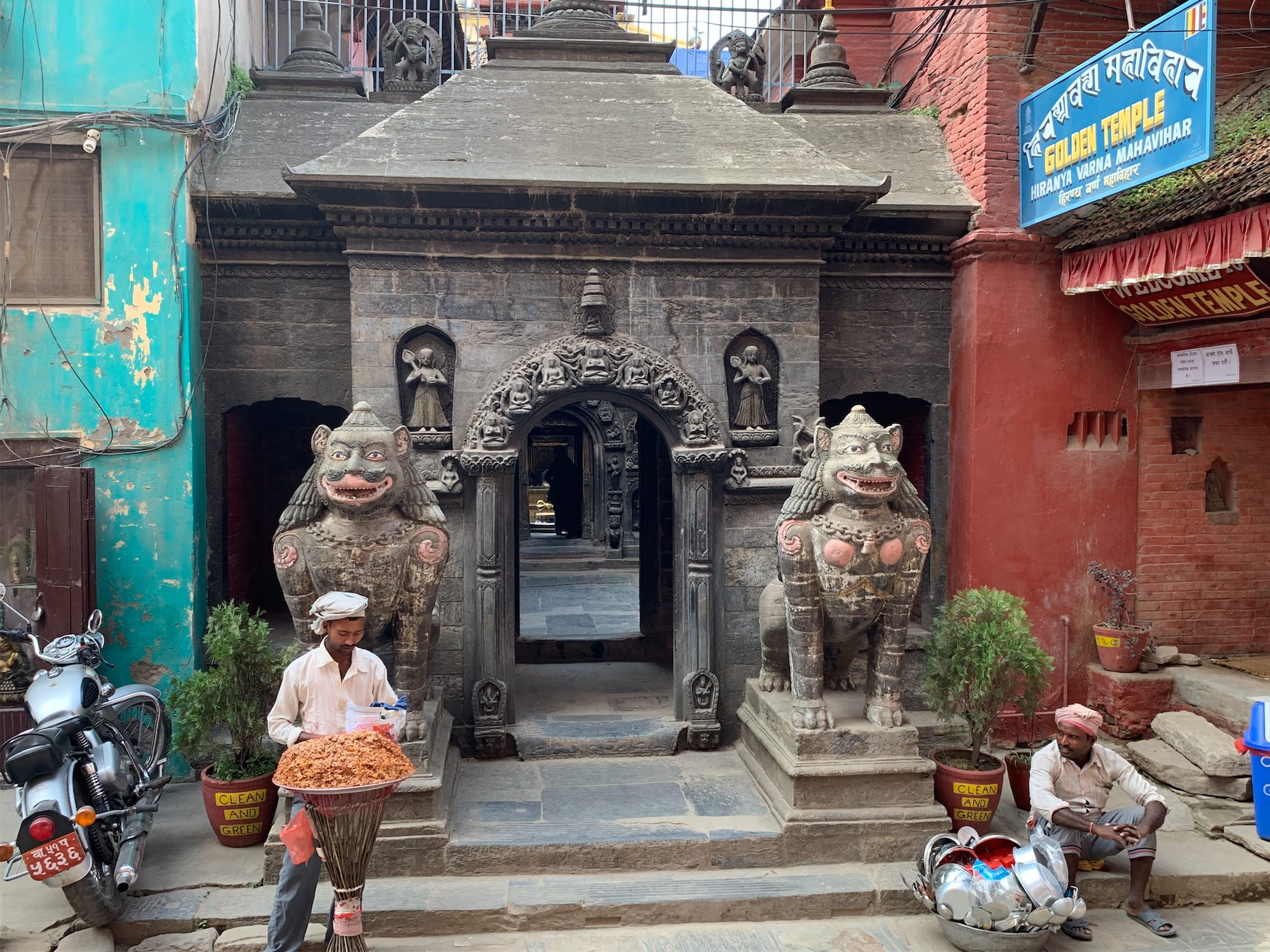
Around Kathmandu
There are two other must-see destinations within easy reach of Kathmandu's historic center.
The Buddhist temple of Swayambhunath dominates the city from the top of a hill. Its perfect whitewashed stupa is surmounted by a golden spire, on which the eyes of the Buddha are depicted, looking towards the four cardinal points of the valley. The drawing under the eyes, similar to a nose is an ek, the number 1 in Nepal.
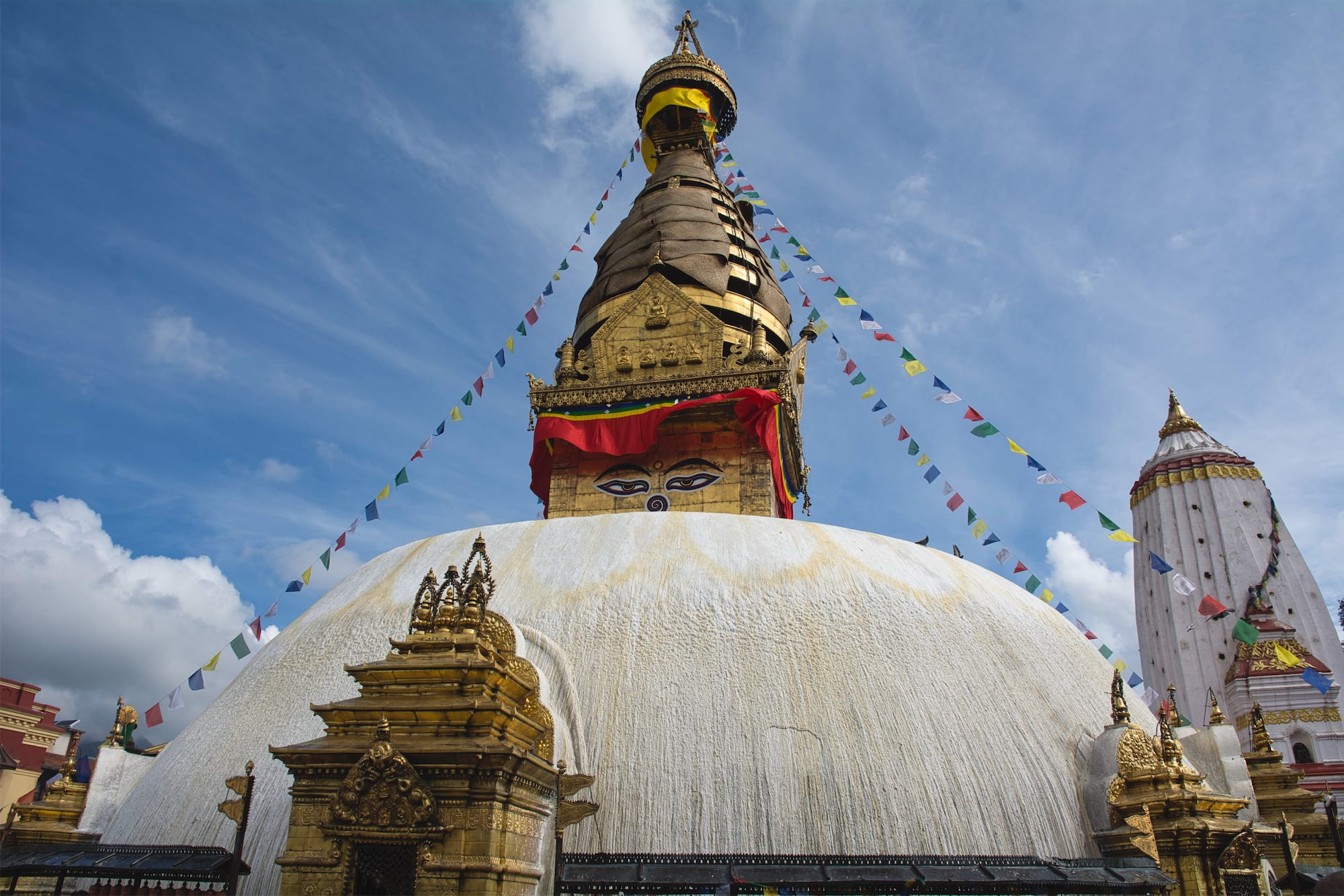
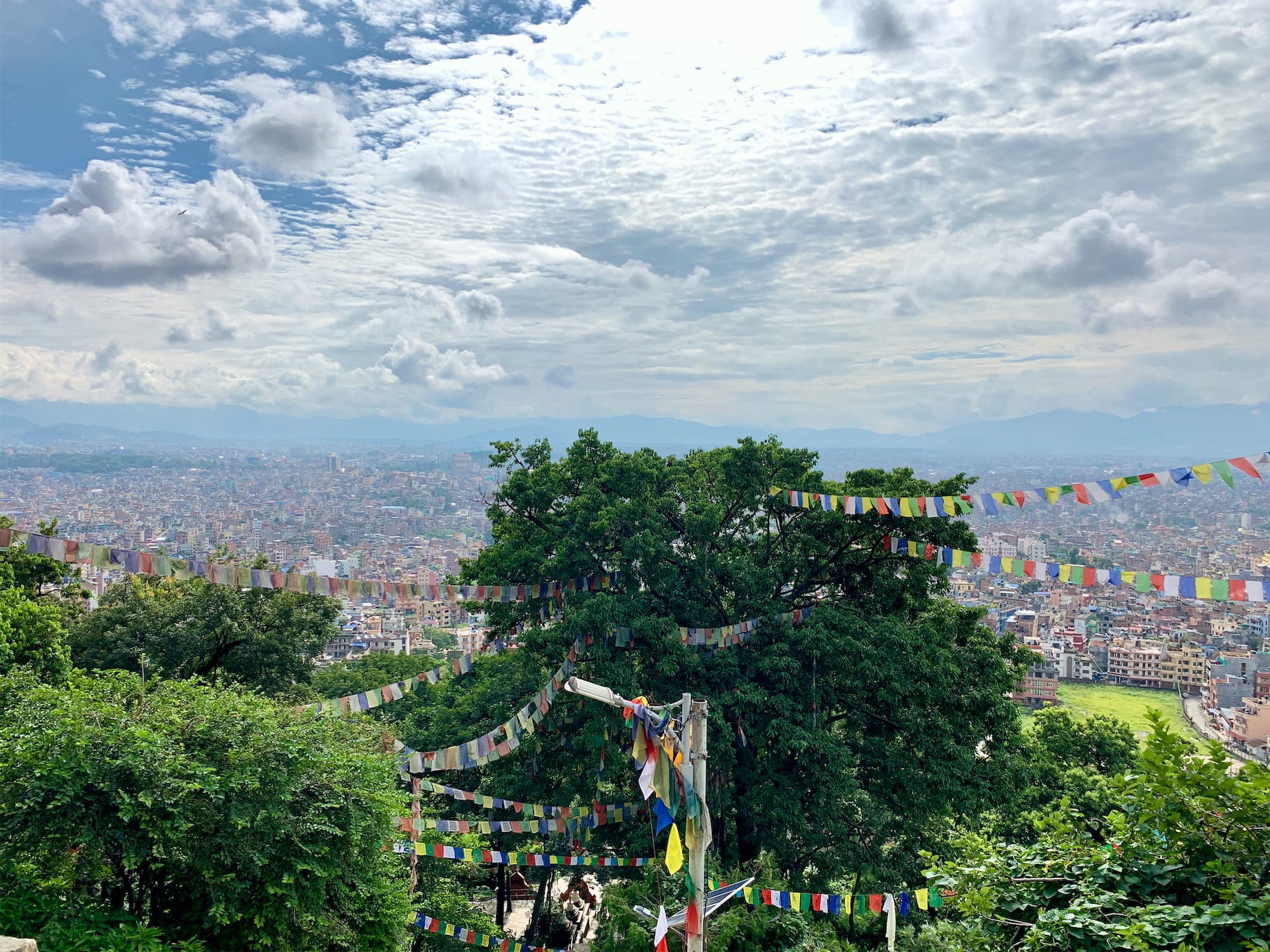
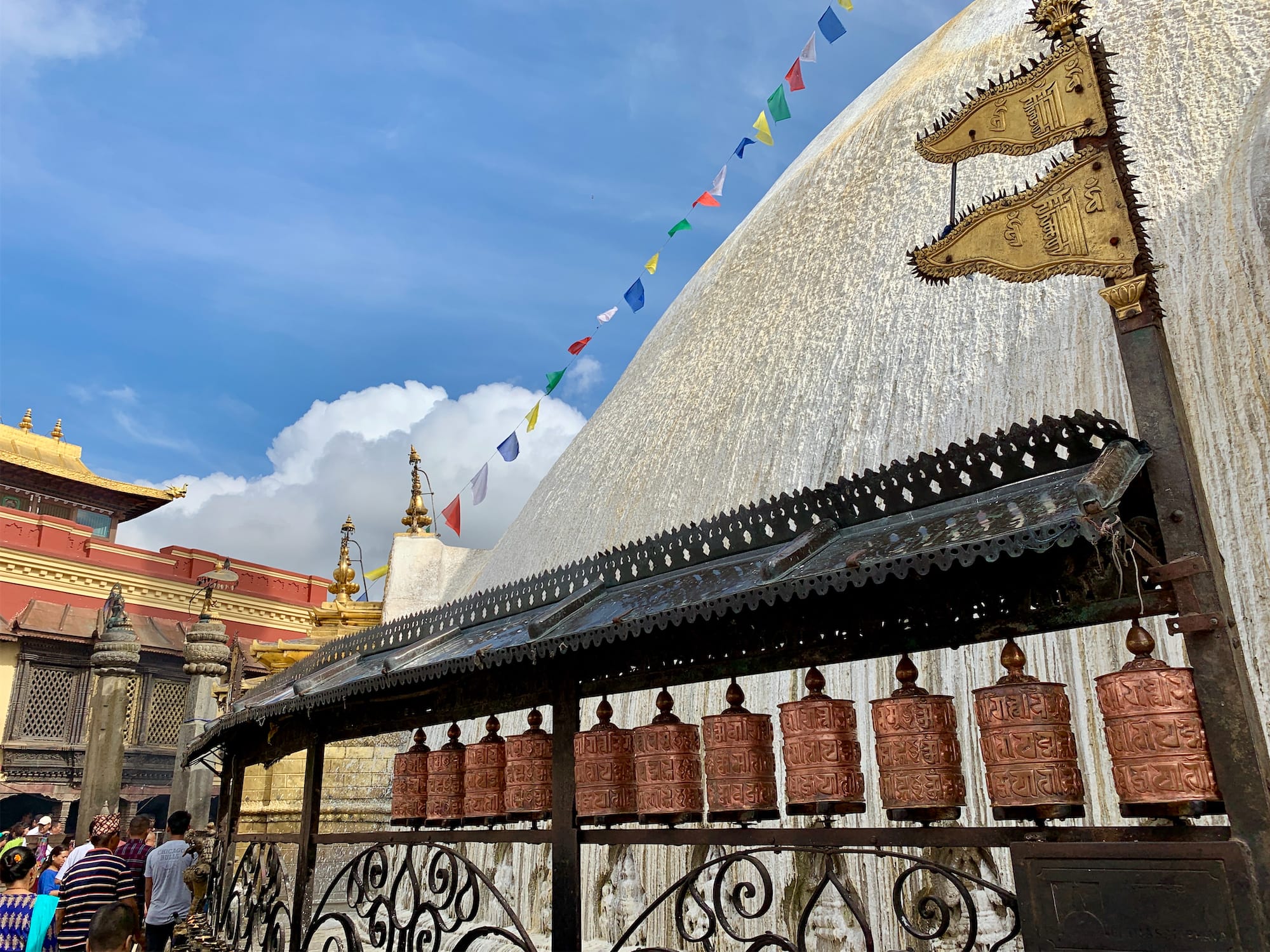
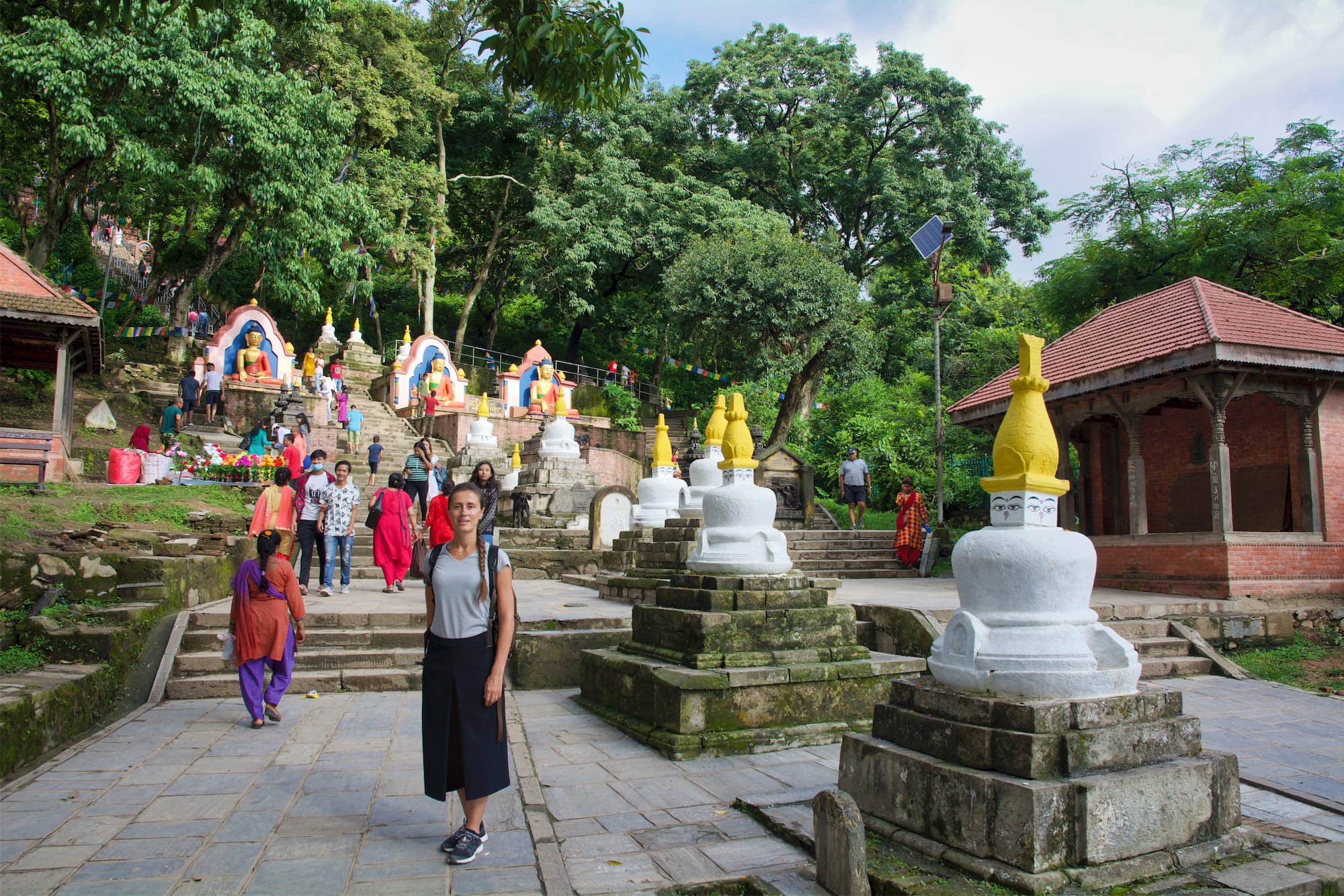
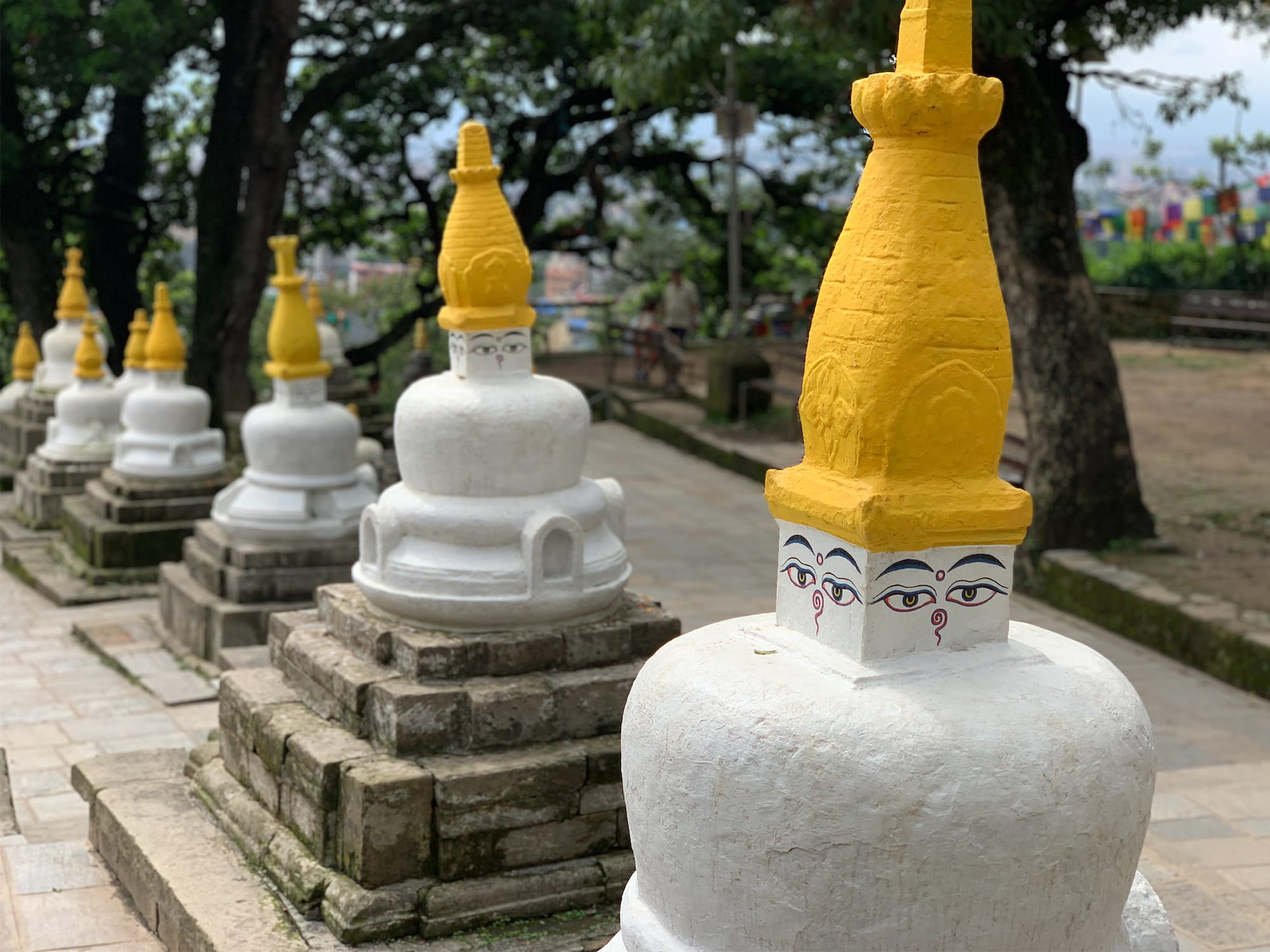
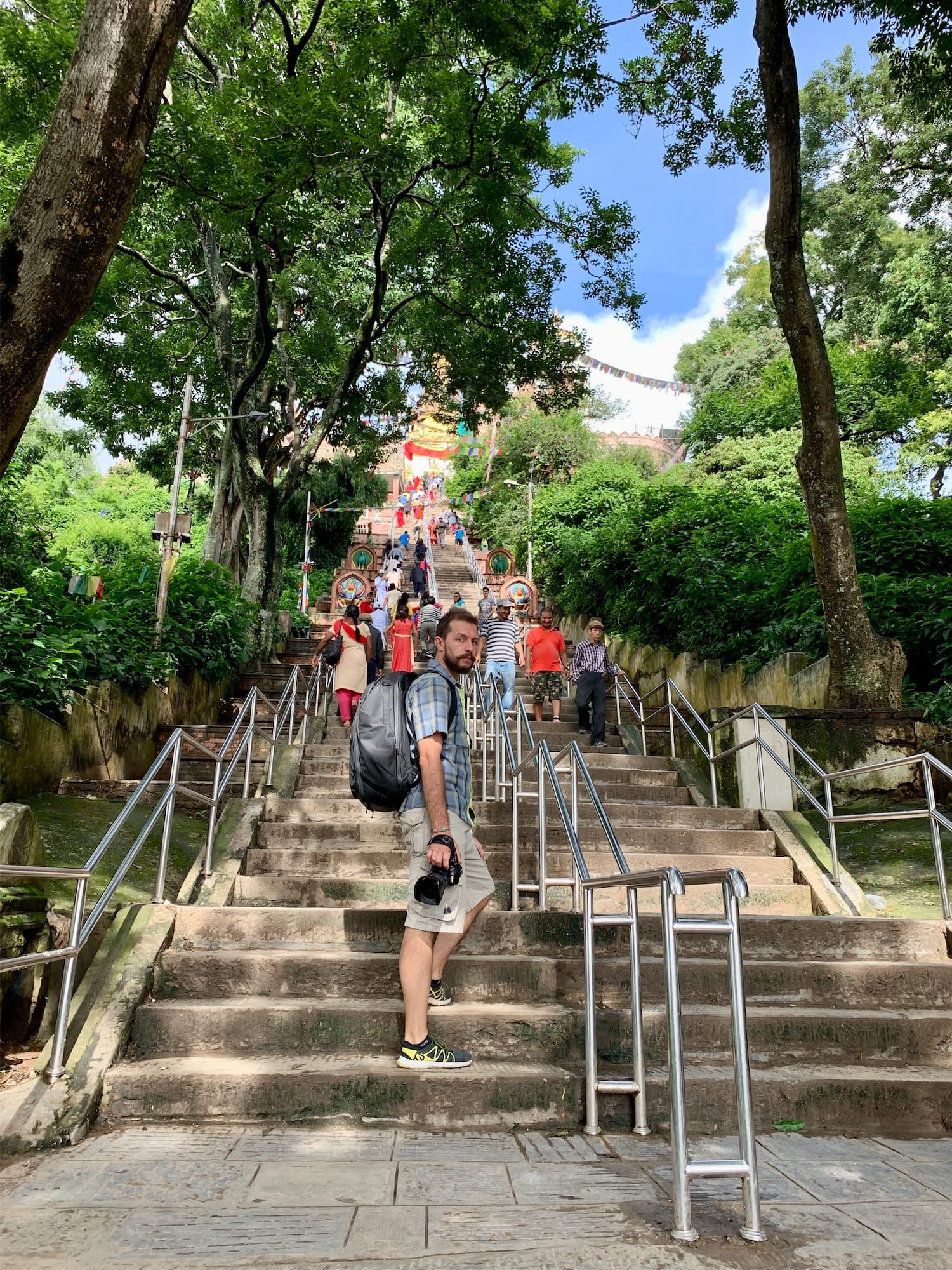
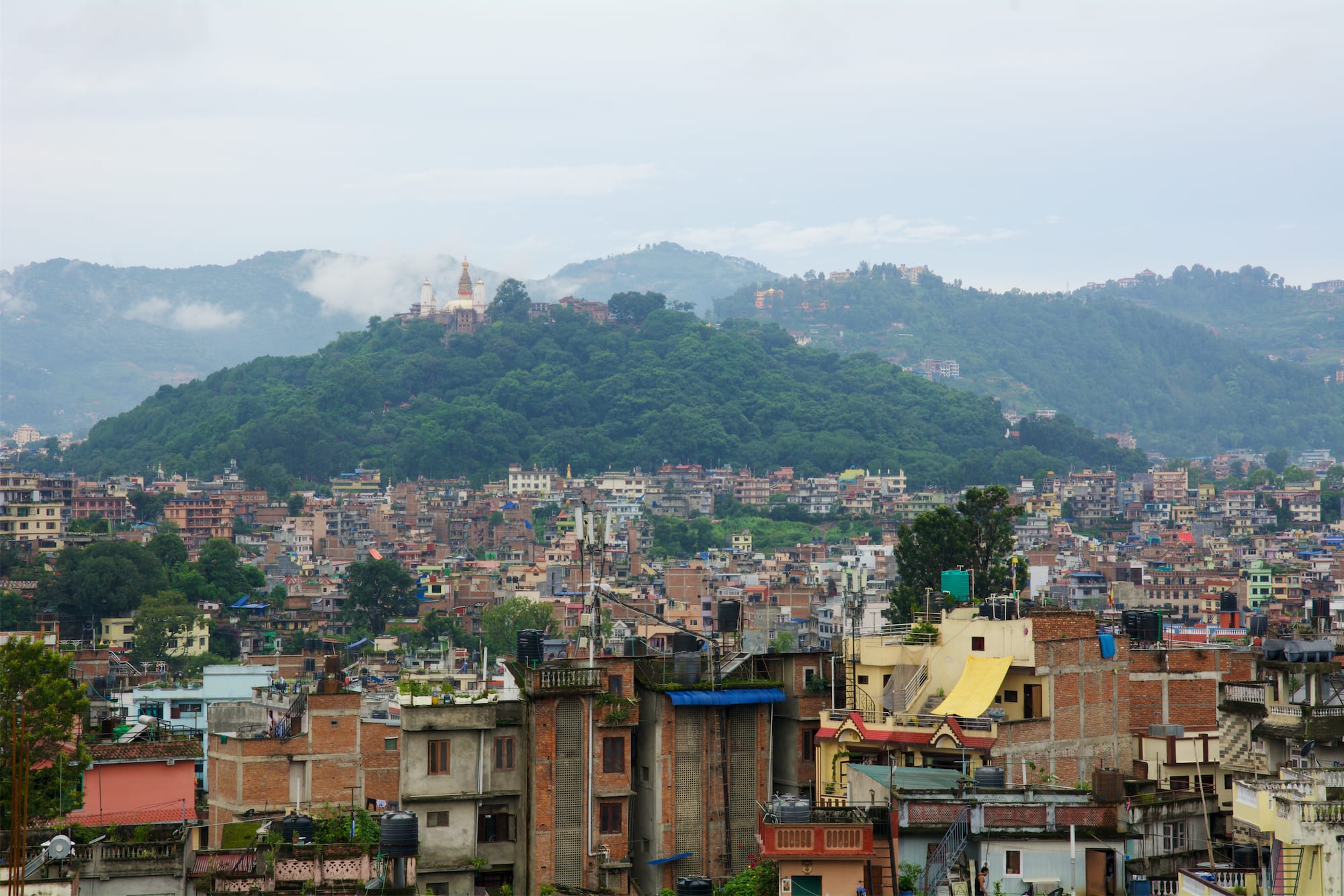
Legend has it that once the valley of Kathmandu was a lake, from whose waters the hill where the temple is currently located spontaneously emerged: the term swayambhu, in fact, means "arose by itself". The complex is visited by many faithful and inhabited by numerous macaques, which move undisturbed between stairways and temples. At the top of the eastern staircase is a large doje (in Tibetan) or vajra (in Sanskrit), which means "celestial lightning", symbolizing the power of enlightenment that destroys ignorance.
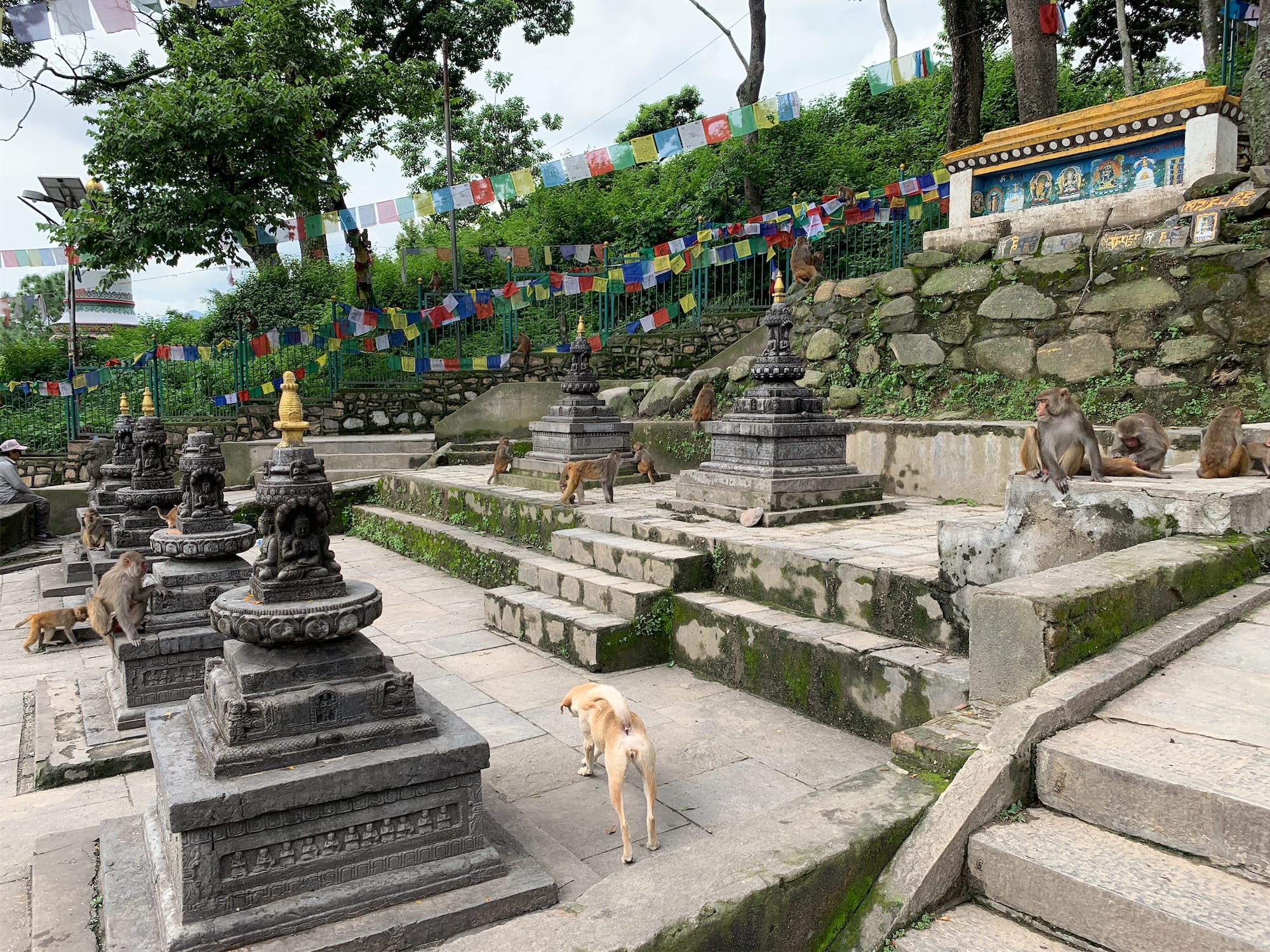

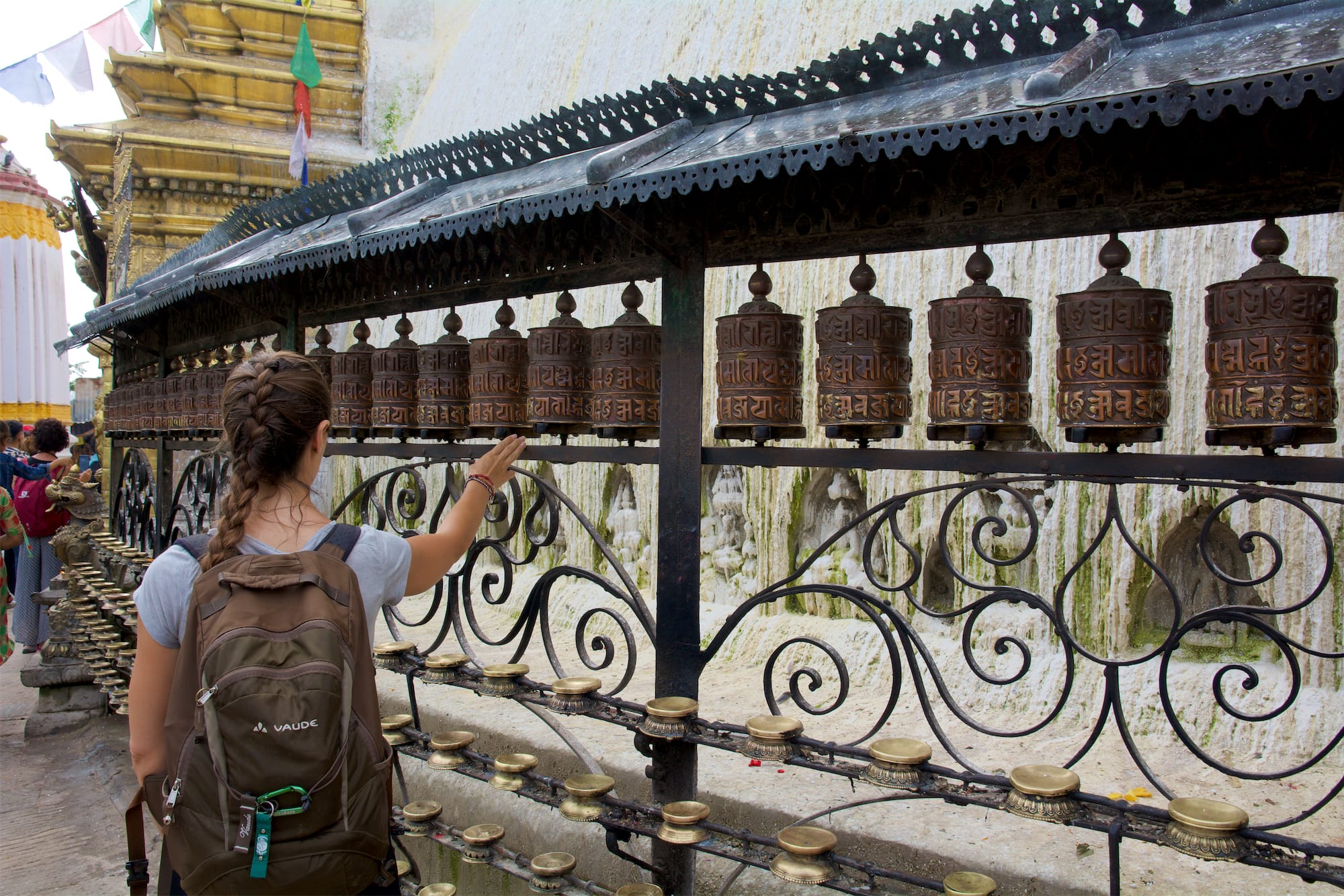

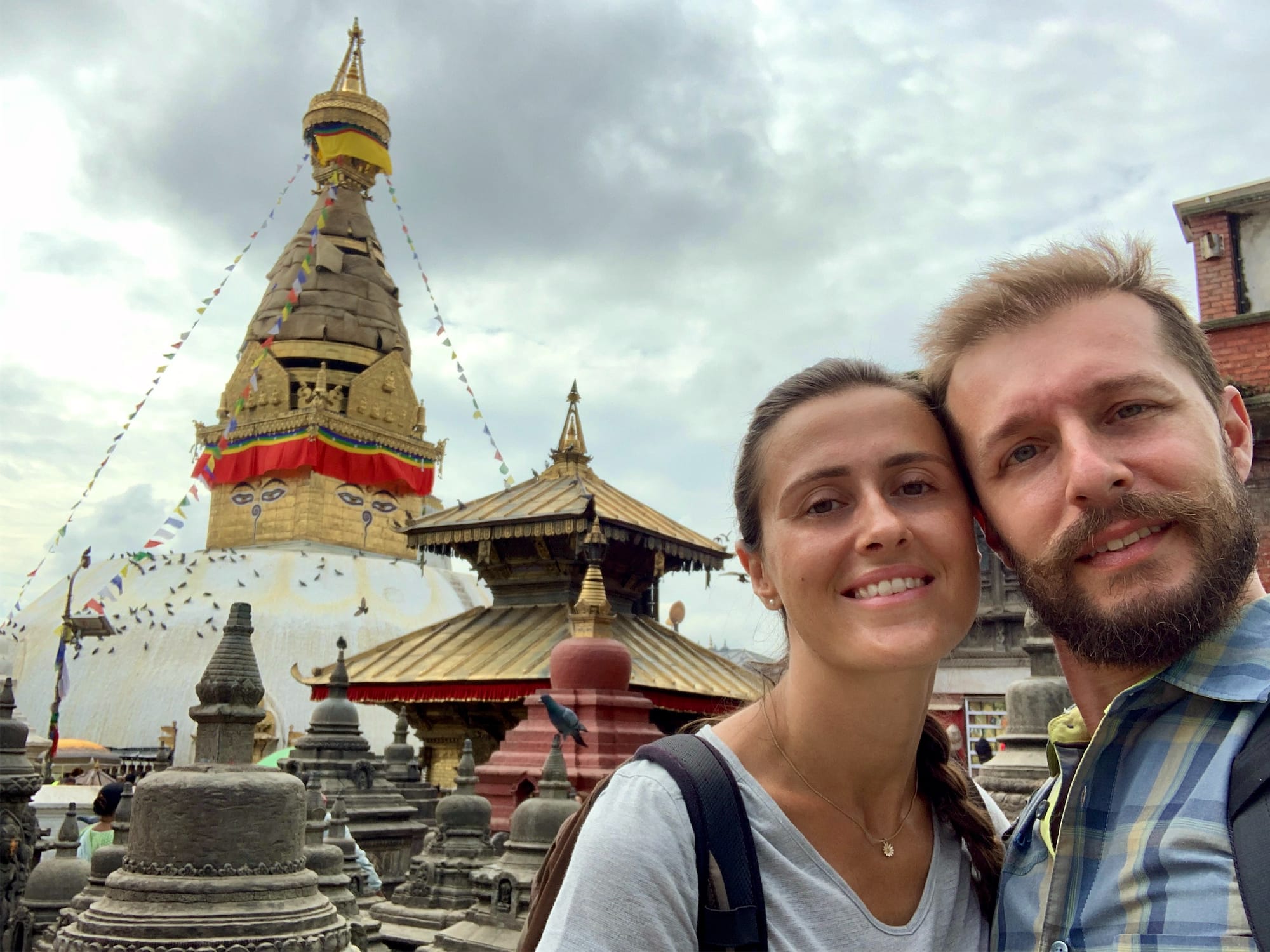
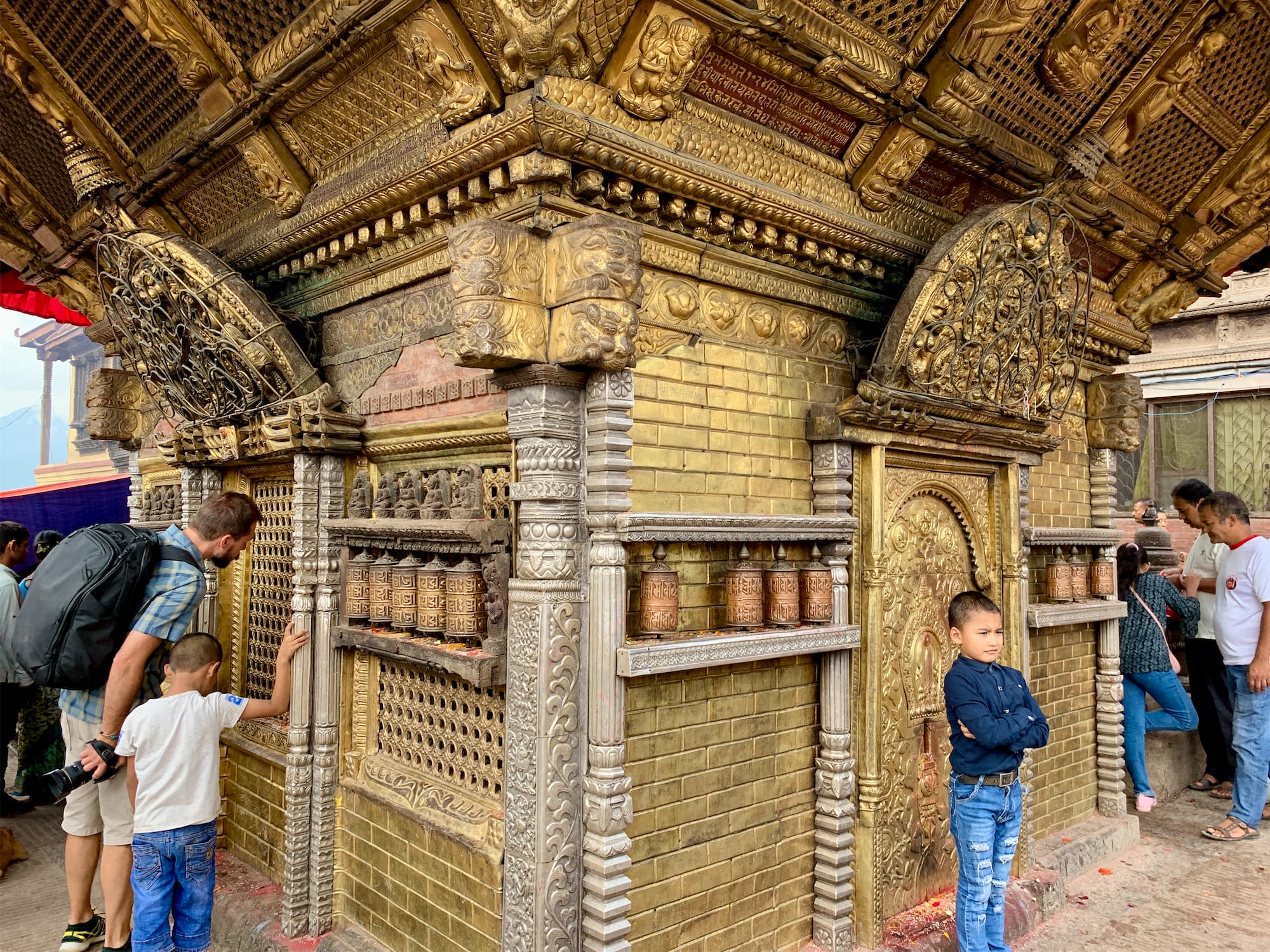
The stupa is surrounded by the classic prayer wheels and the faithful are intent on walking the classic kora in a clockwise direction. The surrounding esplanade is covered with various religious monuments. Inside the complex it is striking how harmoniously, Hindu symbols have integrated with Buddhism. The atmosphere, the flowers and the rice brought as a gift in the presence of Tibetan symbols, refer to a more material worship but also addressed to the Buddha, in its various manifestations.
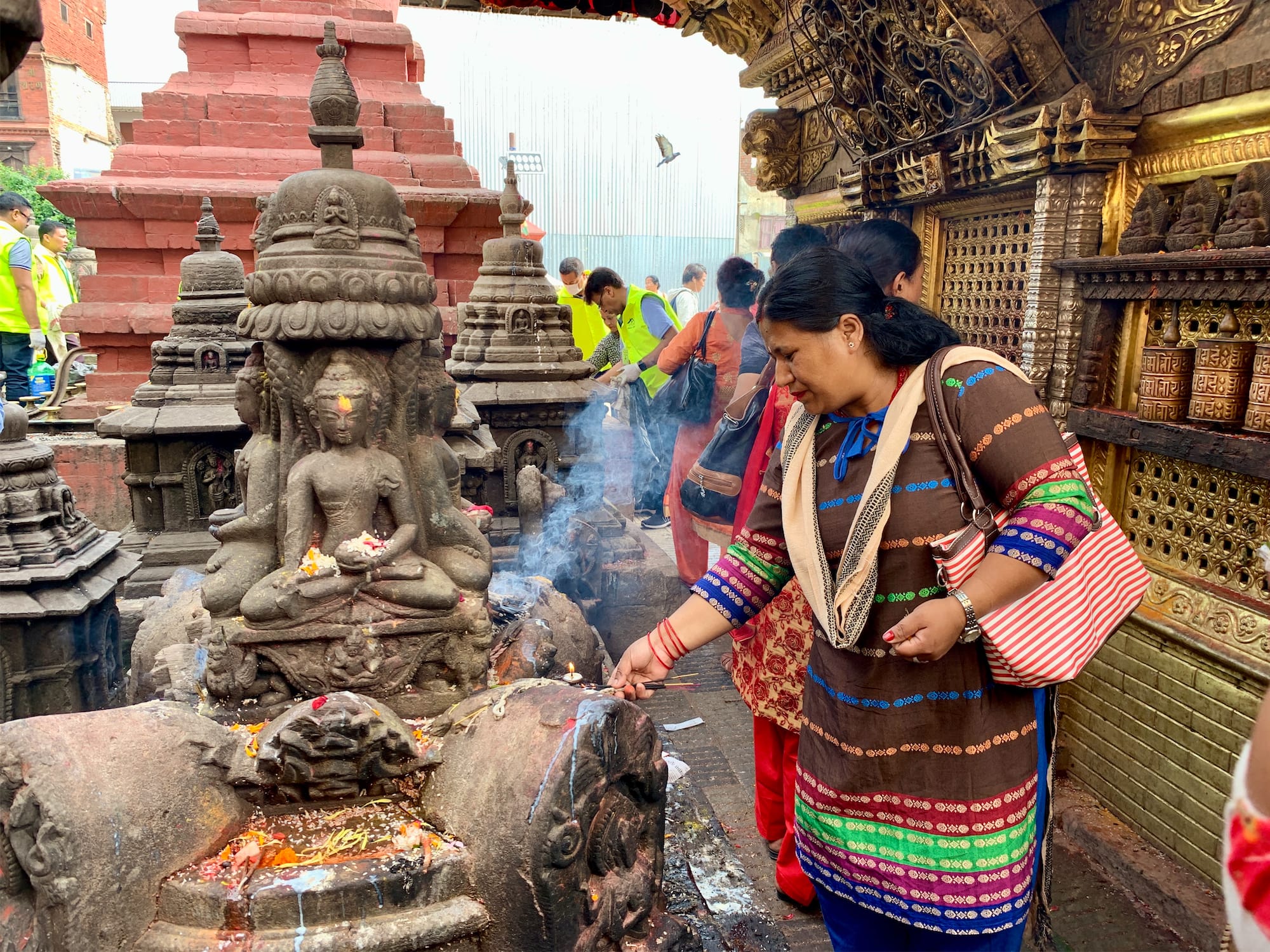
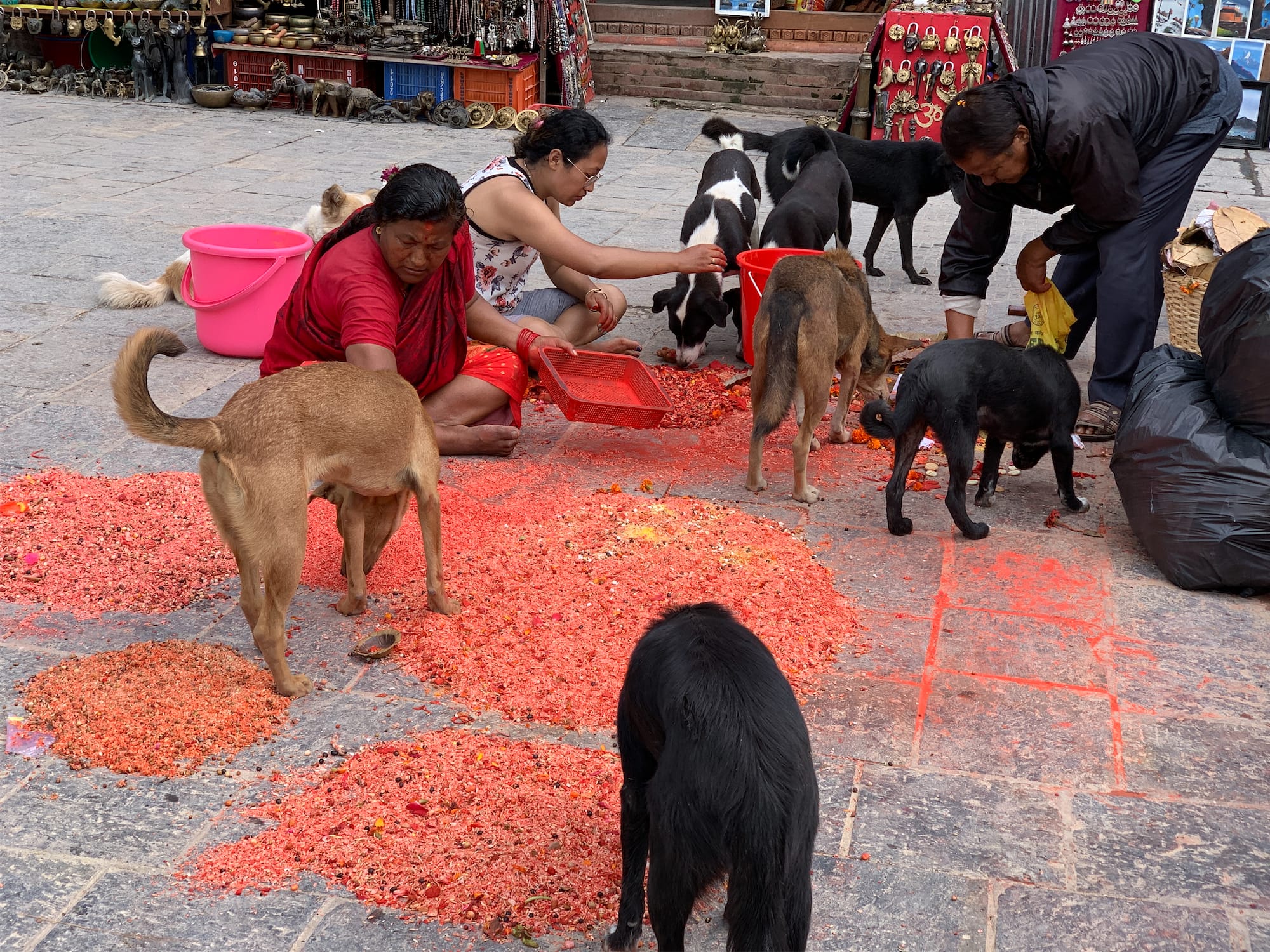
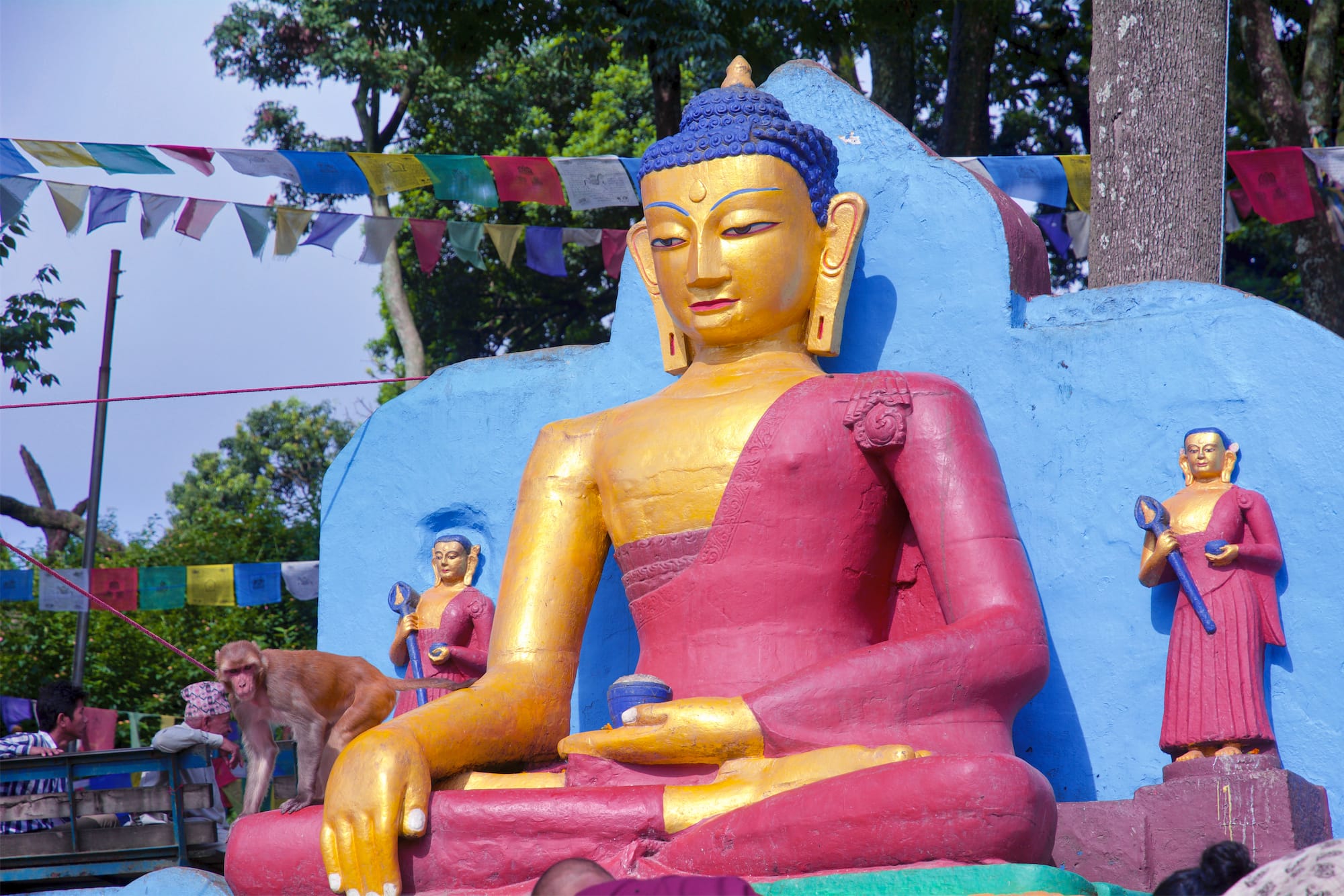
If you want to take a break from this lively atmosphere, I recommend that you visit the Garden of Dreams (Swapna Bagaicha). Built in 1920 in Edwardian style, the complex features a classic western garden, in full contrast to the busy atmosphere of the adjacent streets. The ticket is quite expensive compared to local prices, I recommend a visit only if you are looking for a place to unplug from the chaos of the city.
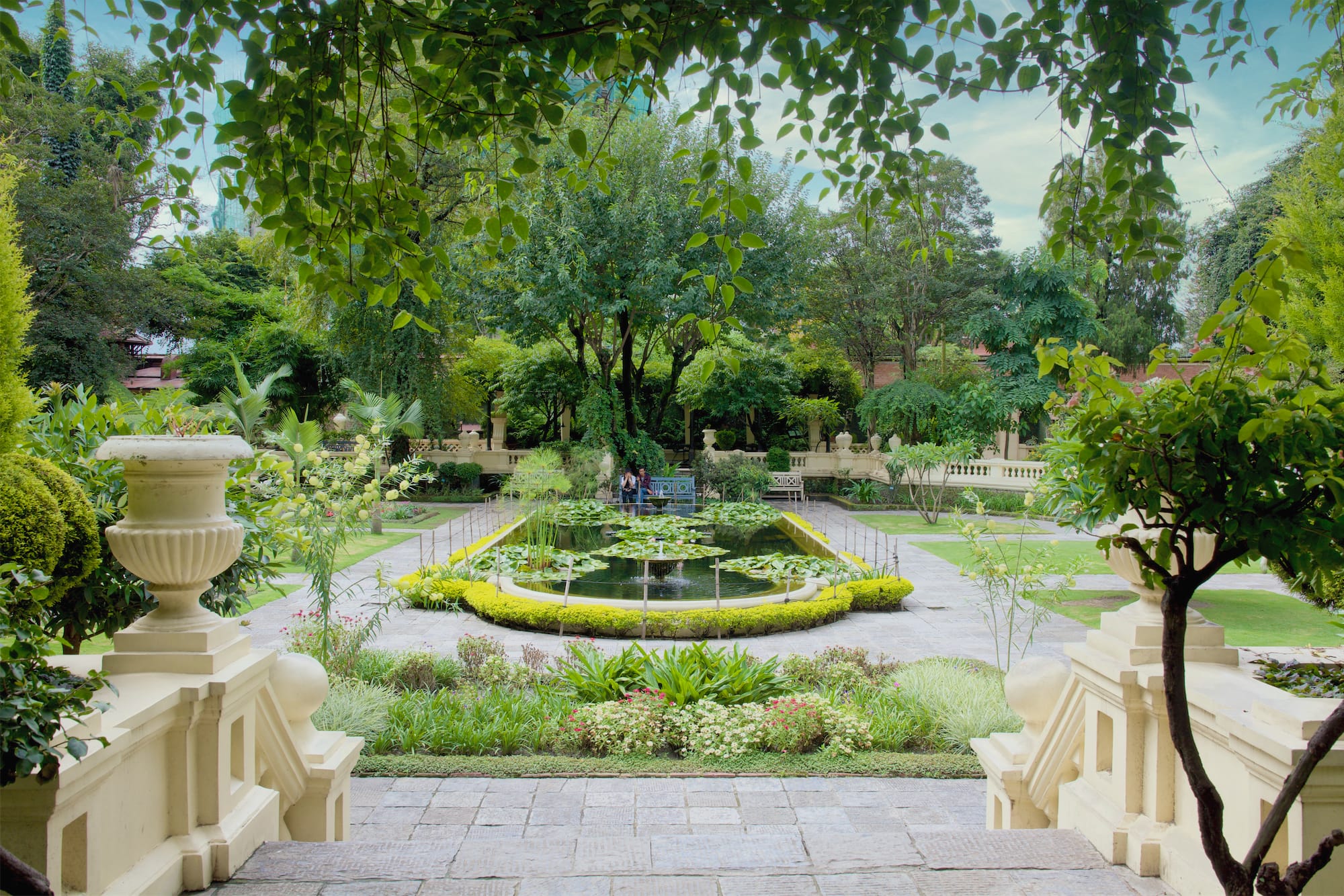
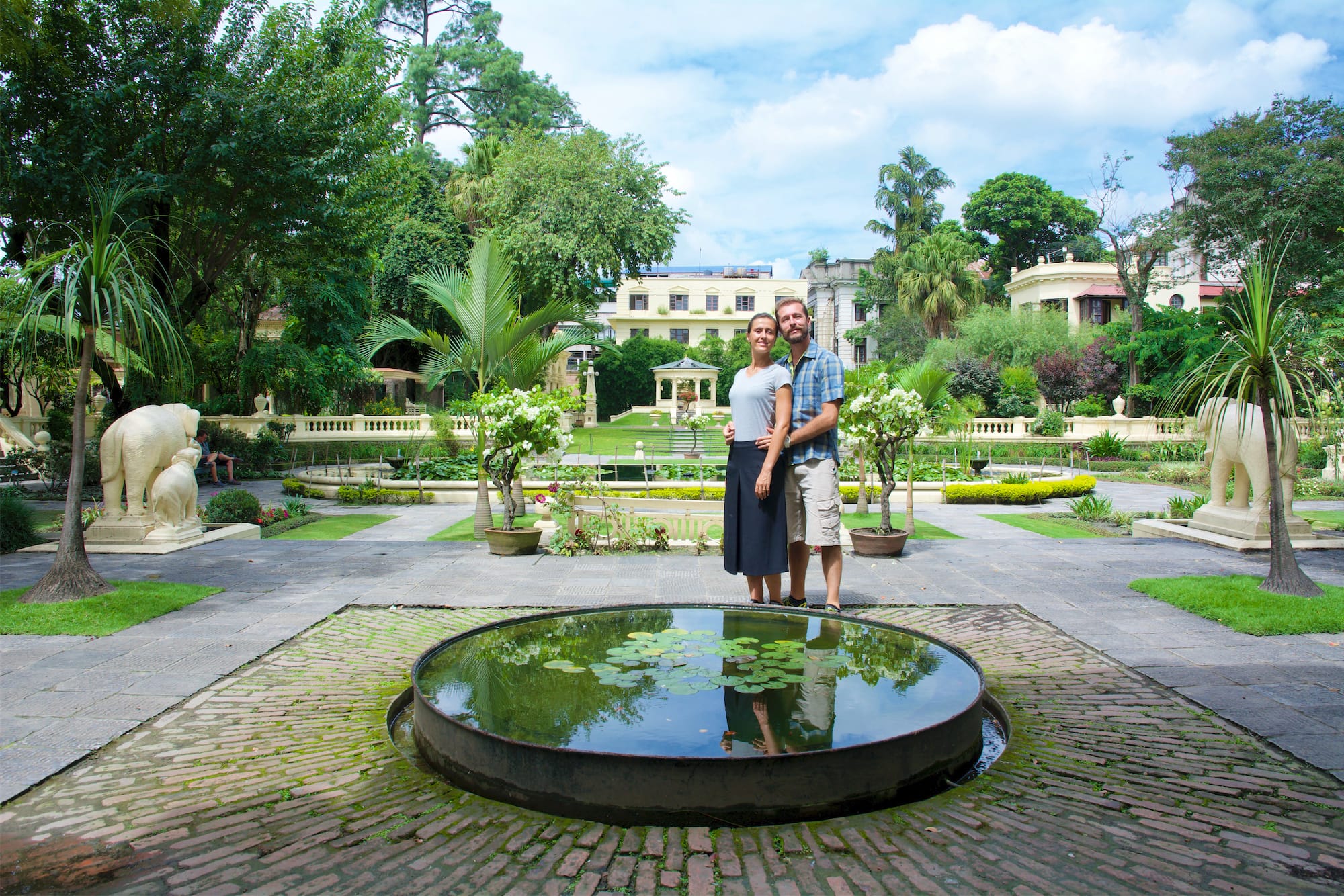
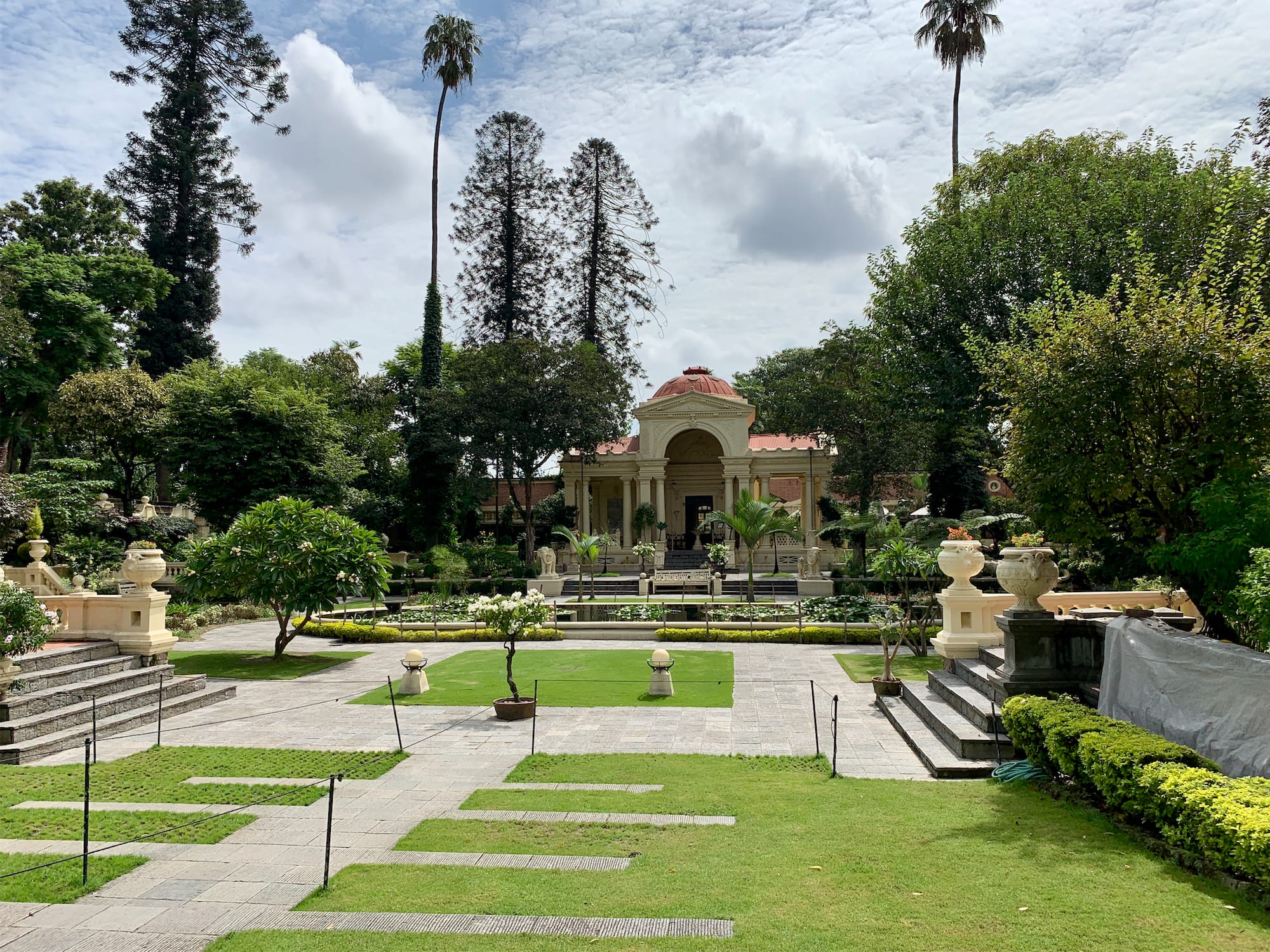
Before your trip
- How to move around? To reach the attractions around Kathmandu, a taxi is very convenient. I recommend that you agree on the amount in advance, which is usually very cheap

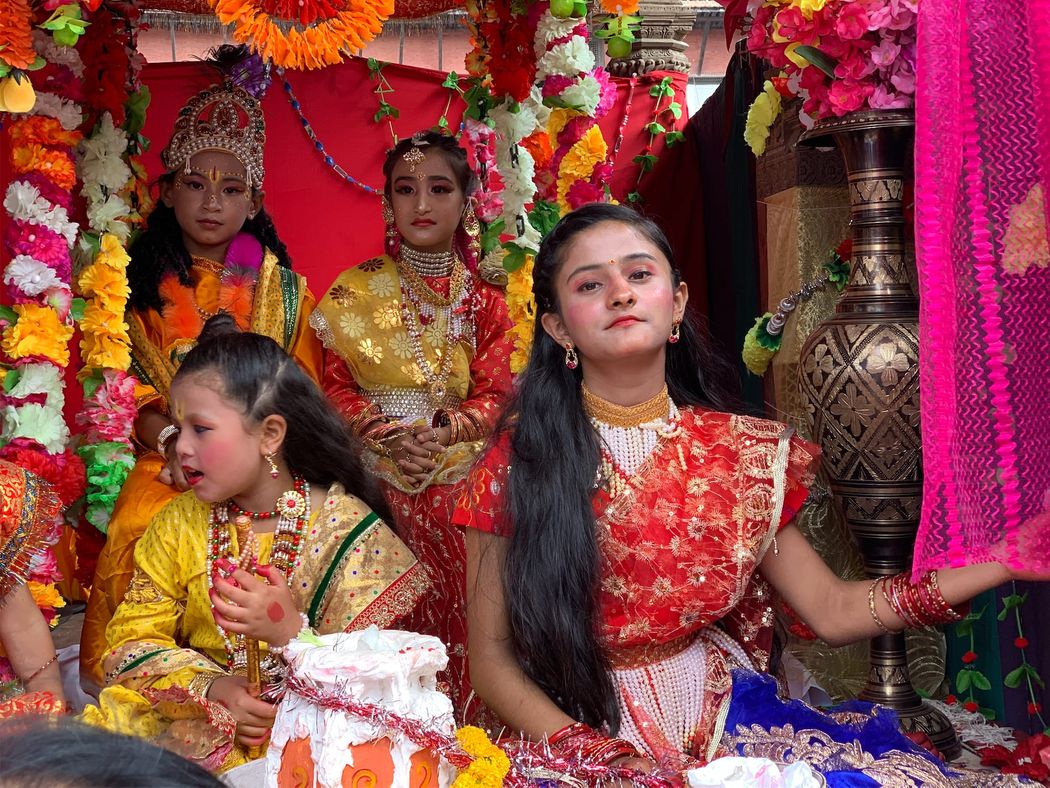
Comments